Morgan Athletic Director Dena Freeman-Patton Breaks Ground for a Culture of Champions
BY CHRIS MURRAY, MSU CLASS OF 1986
EVEN AS A THREE-SPORT ATHLETE AT THE FORMER LAKE
Clifton High School, in northeastern Baltimore City, Dena FreemanPatton felt at home at Morgan State University. In May 2022, the veteran sports executive and administrator strengthened that longtime bond to Maryland’s largest Historically Black College or University when she accepted an appointment as Morgan’s new vice president and director of Intercollegiate Athletics — making her the first woman in the University’s history to hold the position of athletics director.
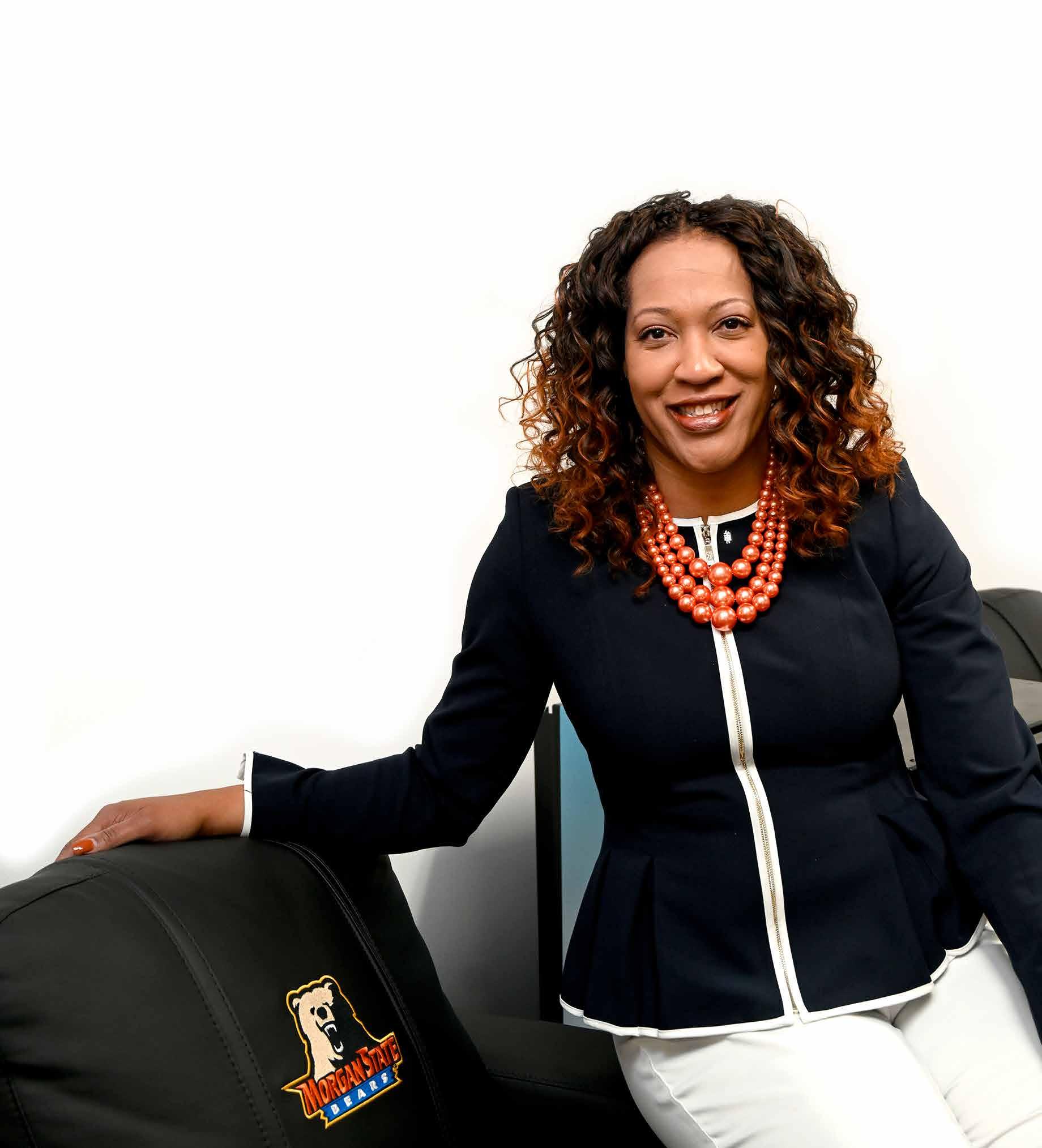
The school has been a part of her family since before she was born, Freeman-Patton says: “Morgan was that first campus that I stepped onto as a teenager, and so this is like coming full circle. My mom (Doris Freeman) is an alum, and my niece is a freshman here this year. As soon as I came back, I realized how many people connected to me are connected to Morgan.”
From her success as a basketball student-athlete at Liberty University, where she received a bachelor’s degree in sports management, to her 25 years’ service as an athletic executive and administrator at universities across the country, Freeman-Patton has witnessed the University’s growth and has spent the last 25 years admiring her mother’s alma mater from afar.
“Every time I came home to visit, I’d always see this growth going on at Morgan State on the academic side,” she said. “I’d see these new buildings going up and hear about new programs and academic success and growing prominence.”
Athletics
COVER STORY
s
A Winning Culture
When it comes to being able to run a successful collegiate athletic program, Freeman-Patton brings a wealth of knowledge and accolades. Before coming to Morgan, she served as associate vice president and athletic director at California State University – Dominguez Hills. Among the many honors she has received, she was named the Woman Leaders in College Sports Administrator of the Year in 2018. In 2020, she served as chair of the NCAA’s Minority Opportunities and Interests Committee.
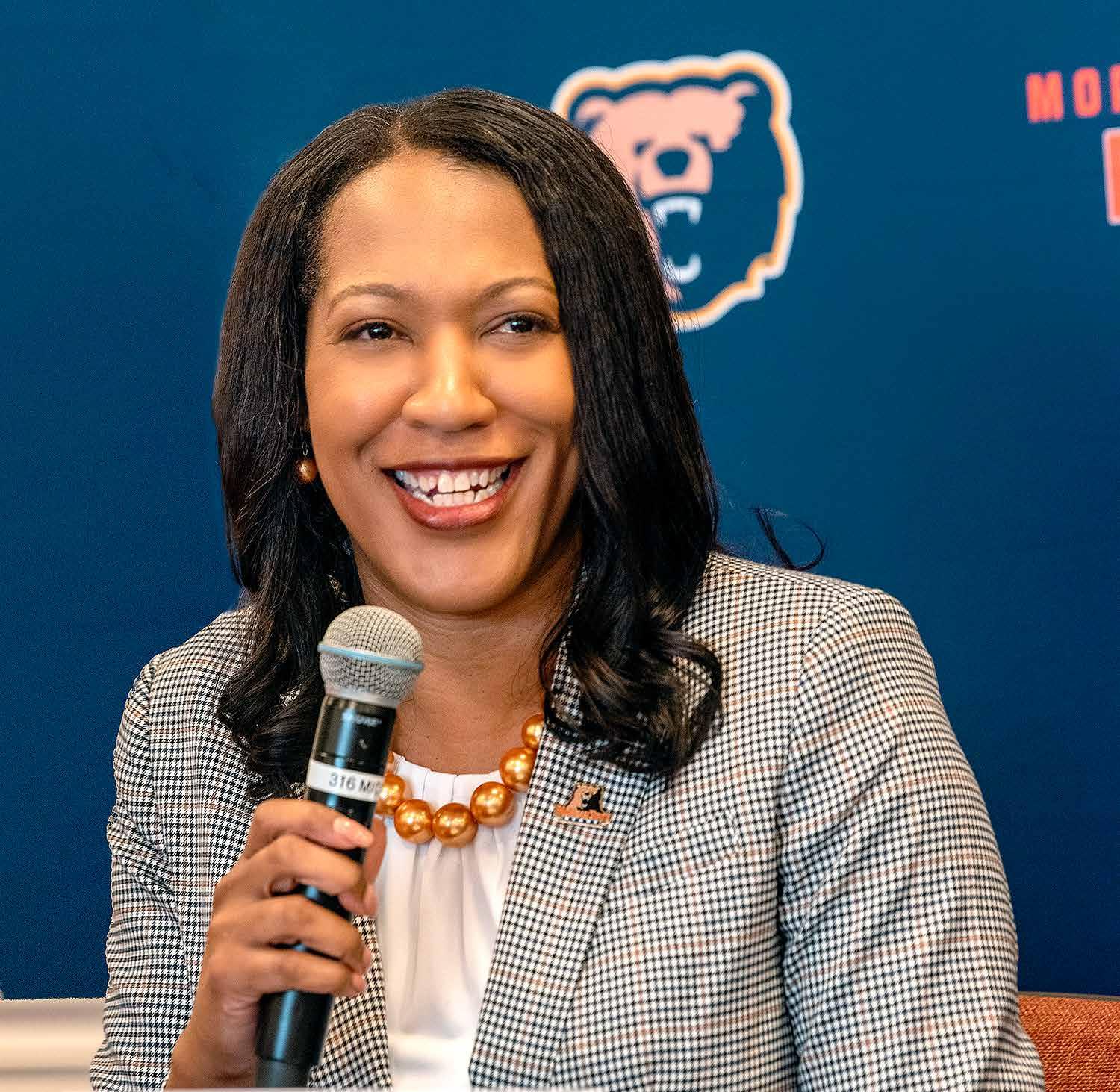
Freeman-Patton’s focus is on the total student-athlete and making sure they achieve success on and off the field. She also wants the Athletics Department to be held in the same esteem as the University’s successful academic programs.
“My vision is that athletics is just as prominent as our academic programs and that athletics is contributing to Morgan’s status as ‘the National Treasure,’ ” Freeman-Patton says. “Our student-athletes already are achieving higher grade-point averages than the student body, and we want to continue that as well as student development, meaning enhancing their lives after college and their career and leadership skills.
“And then we want to win, of course, because that’s what athletics is all about,” Freeman-Patton continues with a smile. “That’s a part of that student-athlete experience: when they can look back at their careers and say that they gave it their all and that the Athletics Department and the University provided those things that they needed to be successful.”
Bringing in coaches who come from winning programs is something Freeman-Patton values as the key to building a winning culture at Morgan.
“It’s a mentality,” Freeman-Patton says. “When we bring in new people, they must have that winning mentality. A winner is a winner at whatever level. As we hire and develop staff, we’re developing them with that championship culture in mind.”
Continued on page 4
3 MORGAN MAGAZINE, SPRING/SUMMER 2023 COVER STORY>BEARS ATHLETICS’ NEW ERA
My vision is that athletics is just as prominent as our academic programs and that athletics is contributing to Morgan’s status as ‘the National Treasure.’ ”
‘‘
— Dena Freeman-Patton, MSU Vice President and Director of Intercollegiate Athletics
Continued from page
Seeking Sustainability
One of those new winners is Kenny Monday, head coach of Morgan’s newly restored wrestling program. As a former world-class wrestler at the collegiate level, Monday brings a wealth of success to his new post. A National Wrestling Hall of Fame inductee in 2001, he was a three-time All-American during his time as a scholar-athlete at Oklahoma State. On the world stage, he won an Olympic gold medal in 1988, becoming the first African American in his sport to do so; a world championship in 1989; and an Olympic silver medal in 1992. He also won five U.S. wrestling championships.
Before the program was disbanded after the 1996–1997 season, because
of a lack of resources, Morgan had one of the most successful HBCU wrestling programs and arguably one of the best in the nation. Under legendary Head Coach James Phillips, Bears Wrestling won 13 Mid-Eastern Athletic Conference titles and produced four national champions and 25 AllAmericans, from 1975 to 1994.
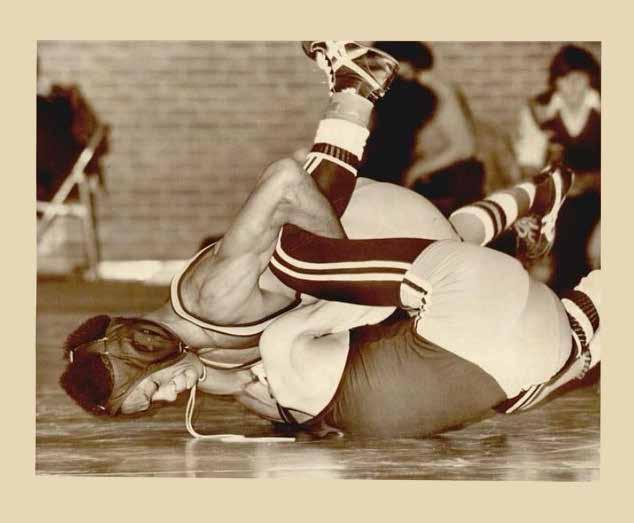
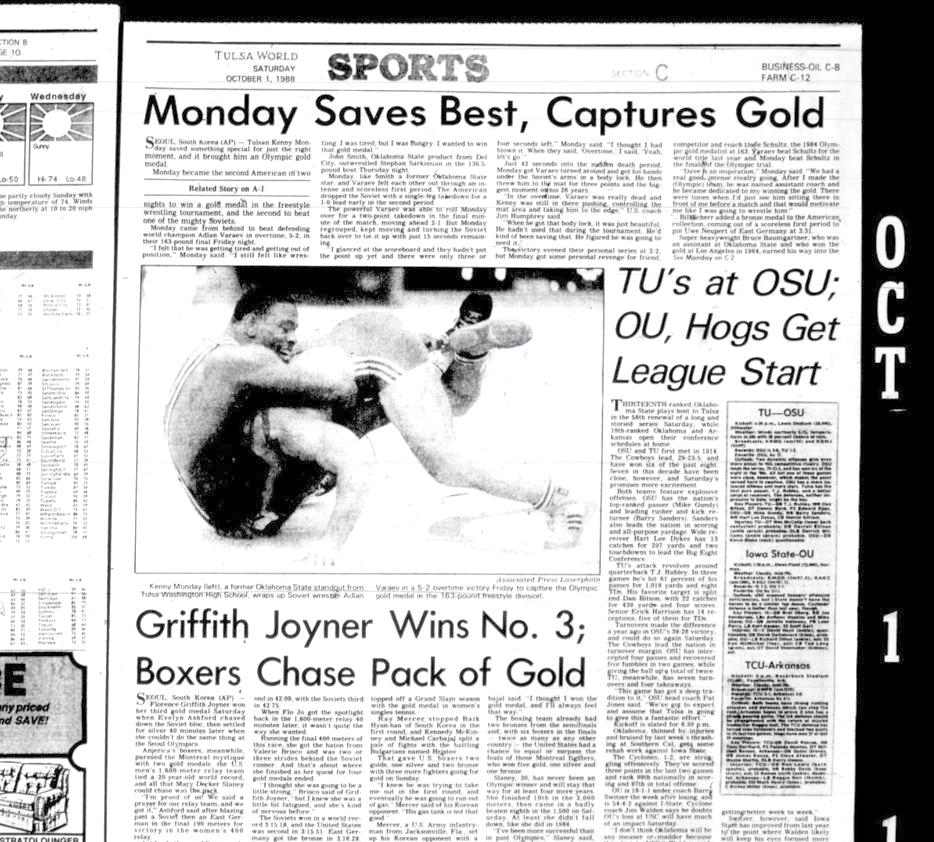
Morgan’s wrestling program was revived thanks to a $2.7-million donation in 2021 from billionaire philanthropist Mike Novogratz, in collaboration with HBCU Wrestling. When the program begins competition during the 2023–2024 academic year, Morgan will be the only Division I HBCU in the nation with a program in the sport.
“Coach Monday brings the gravitas
and experience to lead a Division I program and attract the top talent in the nation to come to Morgan,” Freeman-Patton said in a press release announcing Monday’s hiring, last August.
Monday says that when he met Freeman-Patton for the first time, during his job interview, he found they shared the same values.
“The first thing is to build a great foundation at Morgan State for the wrestling program so that we have that sustainability for years to come,” Monday says. “We want to build a winning tradition, a winning program, and bring in some really good kids of great character and a good work ethic.… The bottom line is…she’s a winner. As athletes, we get into sports because we’re super competitive…and just want to get into that winner’s circle.”

MORGAN.EDU MORGAN MAGAZINE, SPRING/SUMMER 2023 4
3
“We want to build a winning tradition, a winning program, and bring in some really good kids of great character and a good work ethic.”
— MSU Head Wrestling Coach Kenny Monday
Kenny Monday
I think (she is) bringing a new standard, a new level of expectations. She’s looking to have winning programs not just with the new sports but across the board.”
The Holistic View
Beginning with the 2023 season, Morgan will become one of five NCAA Division I schools — and the only HBCU — to have a team in the sport of Tumbling and Acrobatics, which combines gymnastics and competitive cheerleading. Regina Smith, the recently hired head coach for the new program, is fully invested in Freeman-Patton’s vision for Morgan Athletics.
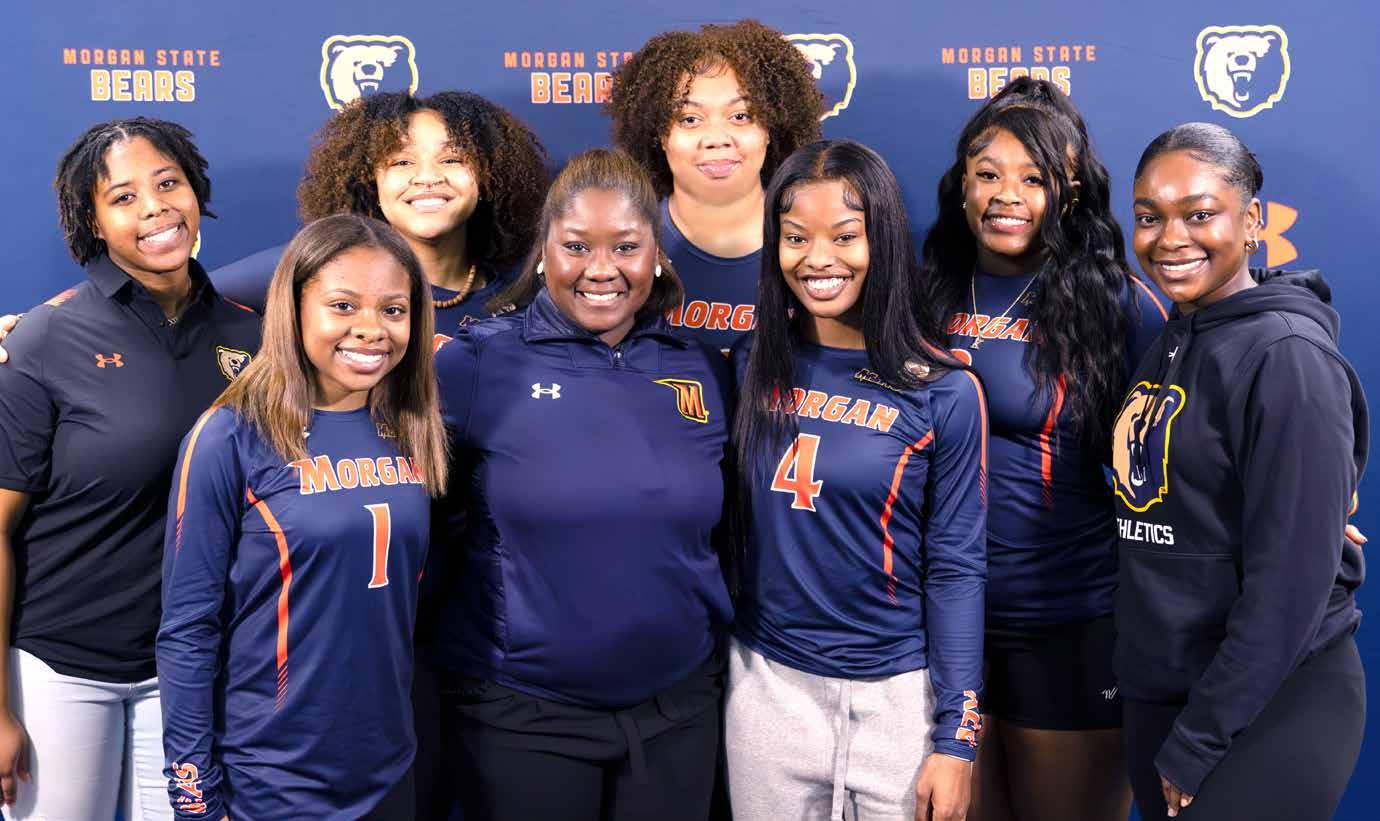

“I think (she is) bringing a new standard, a new level of expectations,” Smith says. “She’s looking to have winning programs not just with the new sports but across the board. She’s setting a new standard academically for our athletes to make sure they are moving in the right direction.”
In the short time Freeman-Patton has been in charge of MSU Athletics, Morgan scholar-athletes say, they have begun to feel the impact of her comprehensive view of their success.
“She really is big into the holistic aspect of being a student-athlete,” said senior Business Administration major Jourdan Page, a member of the Bears’ volleyball team. “(Our coaches have placed) a lot of emphasis on being a well-rounded person, athletically and academically, and then
they also have a really big focus on just taking care of your mental health. That’s really been a big topic, especially since (Freeman-Patton) has been here.”
Page says Freeman-Patton, as Morgan’s first woman athletic director, has proven to her that women can succeed as athletic administrators.
“For me, personally, I already knew that I wanted to go into a career in professional sports once I graduate, but she’s showing that is attainable, to be a woman and be in charge of a sports program,” Page says.
Continued on page 6
5 MORGAN MAGAZINE, SPRING/SUMMER 2023
COVER STORY>BEARS ATHLETICS’ NEW ERA
‘‘
— MSU Tumbling and Acrobatics Head Coach Regina Smith
Regina Smith
Continued from page 5
Morgan’s volleyball team began a new era in May of last year, under the leadership and guidance of firstyear Head Coach Xiomara Ortiz, who is filling the shoes of the team’s legendary, recently retired head coach, Ramona Riley-Bozier, the winningest coach in Morgan’s history. Ortiz says she also shares Freeman-Patton’s values of building a winning program and developing students who are competitive in sports as well as other areas of their lives.
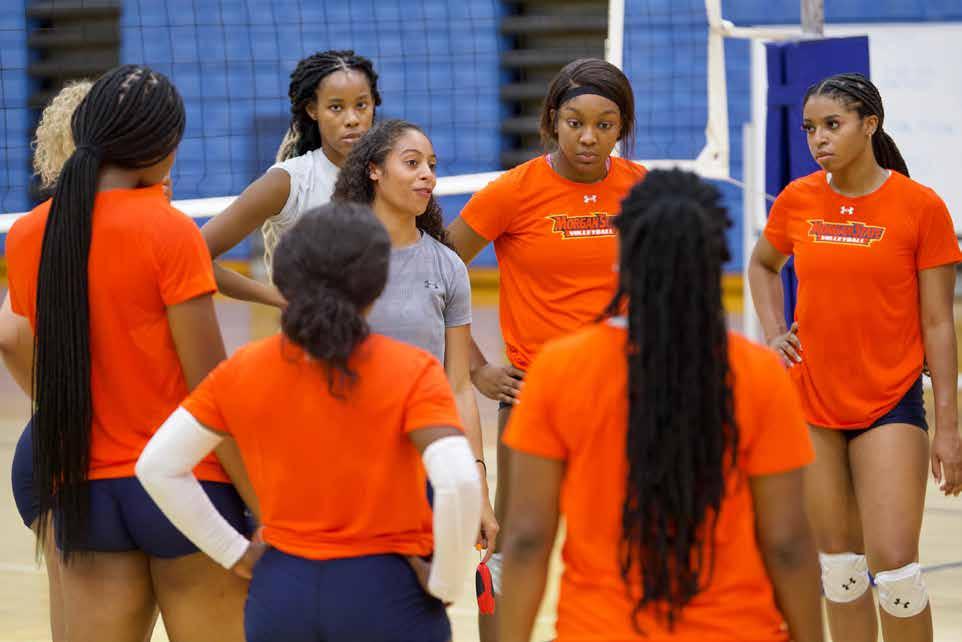
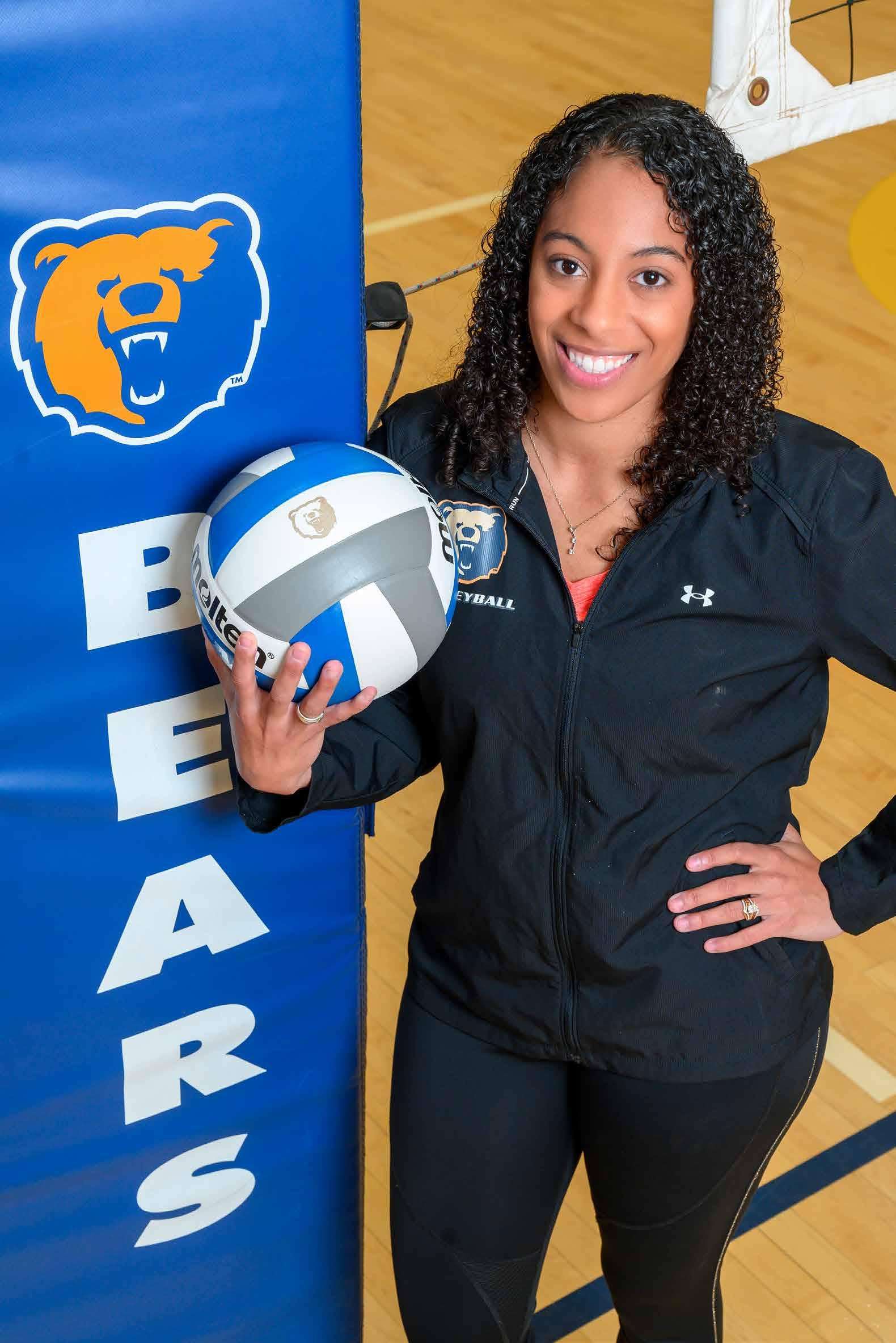
“I think that is the one thing that we are really emphasizing here as far as values. I believe in being a competitor in life and pursuing your competitive drive in different aspects
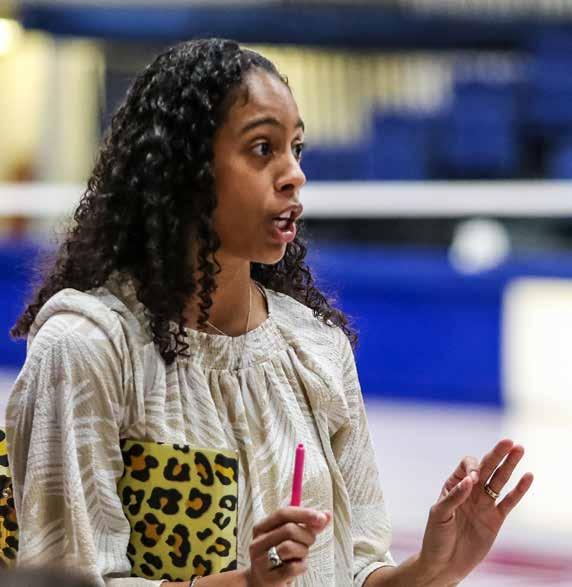
MORGAN.EDU MORGAN MAGAZINE, SPRING/SUMMER 2023 6
Xiomara Ortiz
I believe in being a competitor in life and pursuing your competitive drive in different aspects of life, whether that’s academically, athletically, socially or professionally.”
— Xiomara Ortiz, Head Coach, MSU Volleyball
‘‘
of life, whether that’s academically, athletically, socially or professionally,” Ortiz says. “The value of grit and will power is driven into all those different areas, and how we can be successful on and off the court is something I want to continue.”
In spite of a tough year on the volleyball court in 2022, both Ortiz and Freeman-Patton can be proud of the fact that 11 Morgan players made the Mid-Eastern Athletic Conference’s AllAcademic team: the most of any team in the conference. The players on that list maintained a grade-point average of 3.0 or higher. In July 2022, the team was honored by the American Volleyball Coaches Association for the third consecutive year.

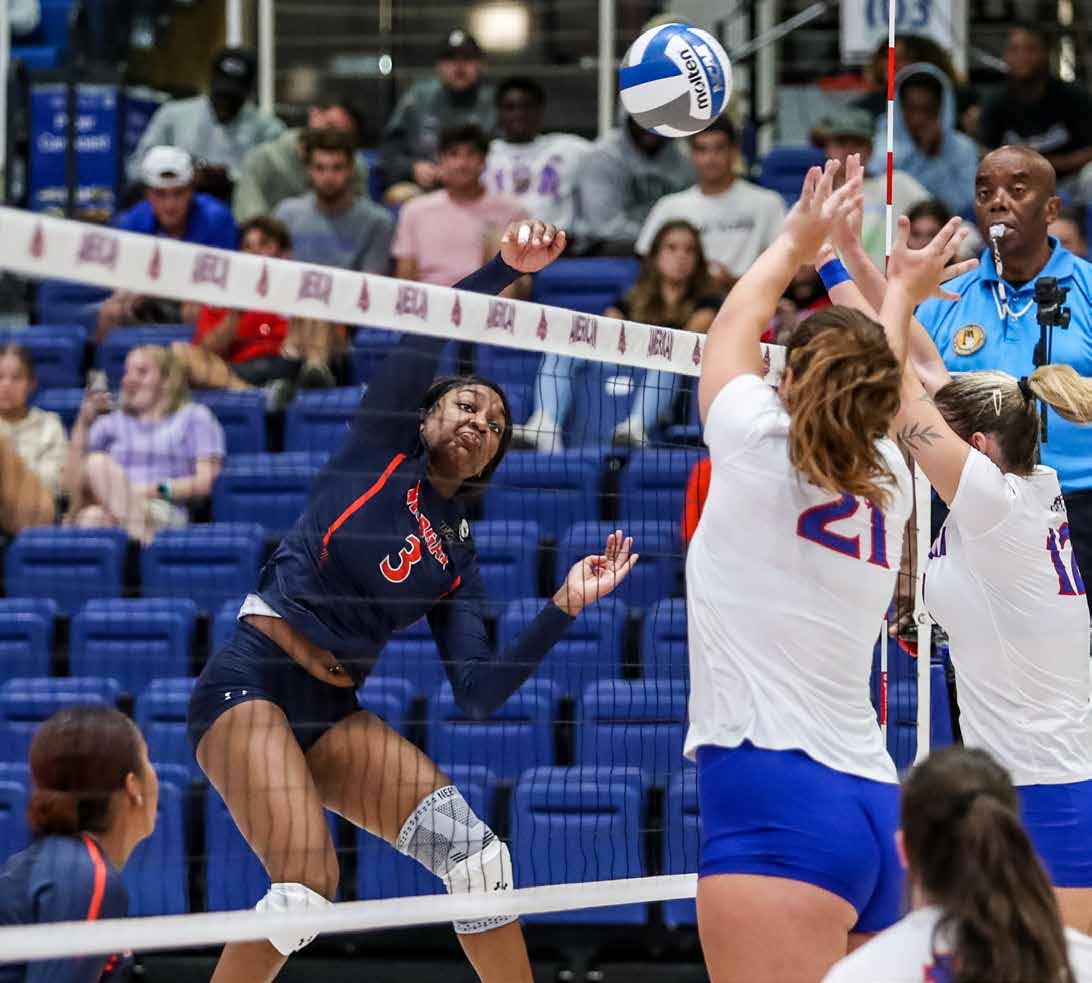
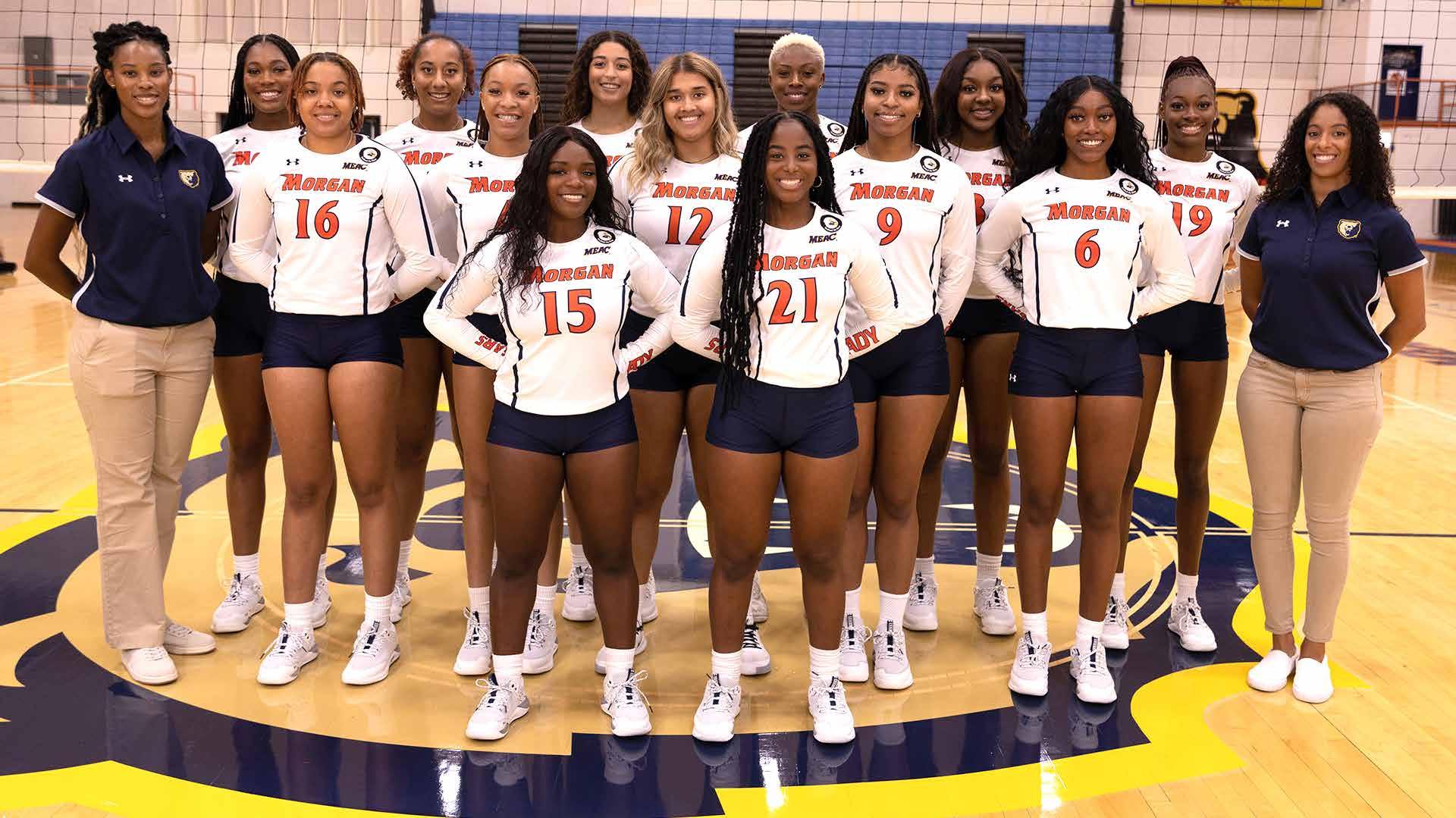
“I want to continue that and to continue to push that threshold academically. I think that’s definitely the vision of Dena Freeman-Patton,” Ortiz says.
Continued on page 8
7 MORGAN MAGAZINE, SPRING/SUMMER 2023 COVER STORY>BEARS ATHLETICS’ NEW ERA
A Different Game
Second-year Morgan State Football Head Coach Damon Wilson praises FreemanPatton’s understanding of the studentathlete experience.
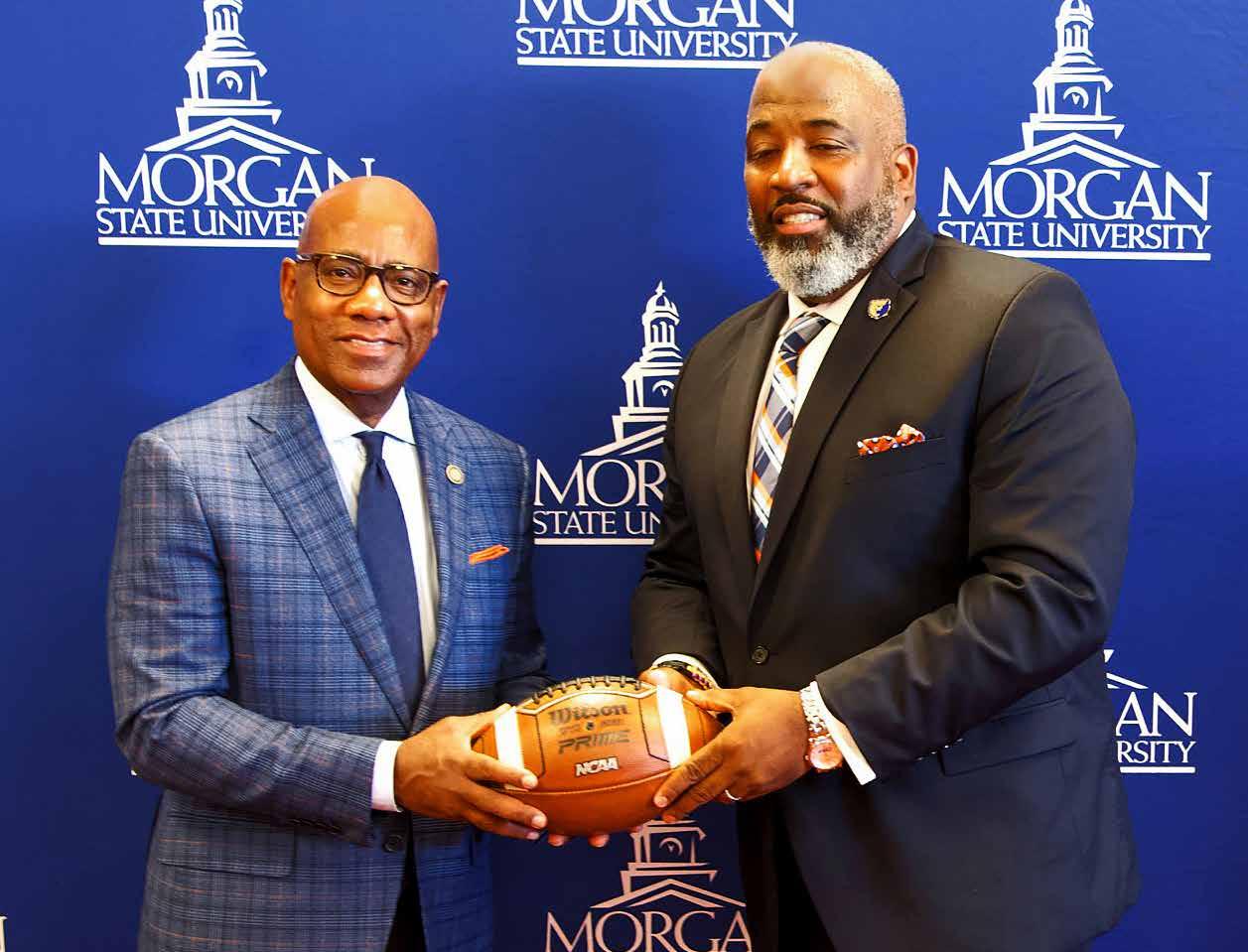
“I see her spending time with each coach and each program and developing those relationships with the student-athletes,” Wilson says. “Oftentimes in that position, you can get caught up in administrative roles and not feel the pulse of the students and what they need. I think she is definitely establishing that connection early in her tenure at the University, and I think that’s really positive.”
Morgan’s storied tradition of athletic success in football began with legendary Head Coach Edward P. (“Eddie”) Hurt, whose teams won 14 CIAA titles and had 11 unbeaten seasons during his 29-year career, from 1930 to 1959. Under Hurt’s successor, Earl C. Banks (1960–1973), the Bears won five CIAA championships and had three unbeaten seasons. Banks sent 41 players to the NFL, including Hall of Famers Len Ford, Roosevelt Taylor, Willie Lanier and Leroy Kelly. From


1965 to 1968, the Bears won 31 consecutive games.
Freeman-Patton believes Morgan’s football program will return to winning ways under Coach Wilson.
“I envision us being a very successful program,” Freeman-Patton says. “When we were a storied program, you also have to remember there weren’t a lot of options for (Black) people. Everybody went to the HBCUs. We got the best players in the country, because they were not going to the (predominantly white institutions).
“We have to play this game differently in order to be successful across all levels,” she adds. “…I think Coach Wilson is definitely going to be a champion again, at Morgan, but it is a building process. It’s not going to happen overnight, but we are seeing some immediate success. I think we’re going to win some championships.”
Wilson is a proven winner. During his 13 years as head coach at Bowie State University, the Bulldogs were one of the dominant teams in the CIAA, compiling an 89-45 record and earning four trips to the NCAA Division II playoffs. Under Wilson’s leadership, Bowie
MORGAN.EDU MORGAN MAGAZINE, SPRING/SUMMER 2023 8 Continued from page 7
… I think Coach Wilson is definitely going to be a champion again, at Morgan, but it is a building process. It’s not going to happen overnight, but we are seeing some immediate success.”
— Dena Freeman-Patton
Head Coach Edward P. (“Eddie”) Hurt
Head Coach Earl C. Banks
‘‘
MSU President David K. Wilson (left) and Head Football Coach Damon Wilson
State won three consecutive CIAA championships (2018, 2019 and 2021) and five CIAA North Division titles. In 2021, Wilson was named the American Football Coaches Association Division II Coach of the Year.

Wilson took the helm at Morgan in June 2022, one month after FreemanPatton took the top Athletics post, and the Bears did make progress. After taking nine losses in 2021, the team improved to 4-7 last season, with Wilson as its head mentor.
“I know we’re headed in the right direction,” he says.
Freeman-Patton says that before hiring Wilson, she talked with members of the football team to learn what they were looking for in a new head coach.
“I had a meeting with the football team before I hired him to see what
the student-athletes’ experience had been. ‘What are you looking for? What has been your experience?’ ” Freeman recalls. “With that, I’ve seen their attitude and mentality change for the better. They’re excited, they’re motivated, and you could see it on the field.”
Bears’ linebacker Lawrence Richardson, a junior biology major, said Freeman-Patton’s hiring of Wilson was a game-changer for the MSU football program.

“Bringing in Coach Wilson really changed a lot,” Richardson said. “This is the most I’ve ever won since I’ve been here. (Coach Wilson) has made so much of a difference. That just reflects that (Freeman-Patton) is about business, and that’s what Coach Wilson is about. She hired him because she saw what he
could do. She saw that experience and saw that was winning, and I’m glad she did that.”
Despite all the things she has accomplished in her first few months, Freeman says there is still much to do to elevate Morgan State University Athletics to join the best programs in the country. She said she is still in the evaluation stages.
“All of our student-athletes are excited about the future, and that’s where it starts. The rest is the hard work that goes into it. You have to be motivated and do what you need to do in the classroom,” Freeman-Patton says. “My job is to make sure they’re prepared for the next steps in their lives and create a culture around them, meaning the support staff and making sure we have things available for them, making sure we have facilities available to get what we need to get done.” n
9 MORGAN MAGAZINE, SPRING/SUMMER 2023 COVER STORY>BEARS ATHLETICS’ NEW ERA
“I know we’re headed in the right direction.” — Damon Wilson, MSU Head Football Coach
Lawrence Richardson
LEGACY
RESOUNDING A MUSICAL TREASURE
Morgan Alum and Longtime Bands Director Melvin Miles Passes the Baton in Retirement
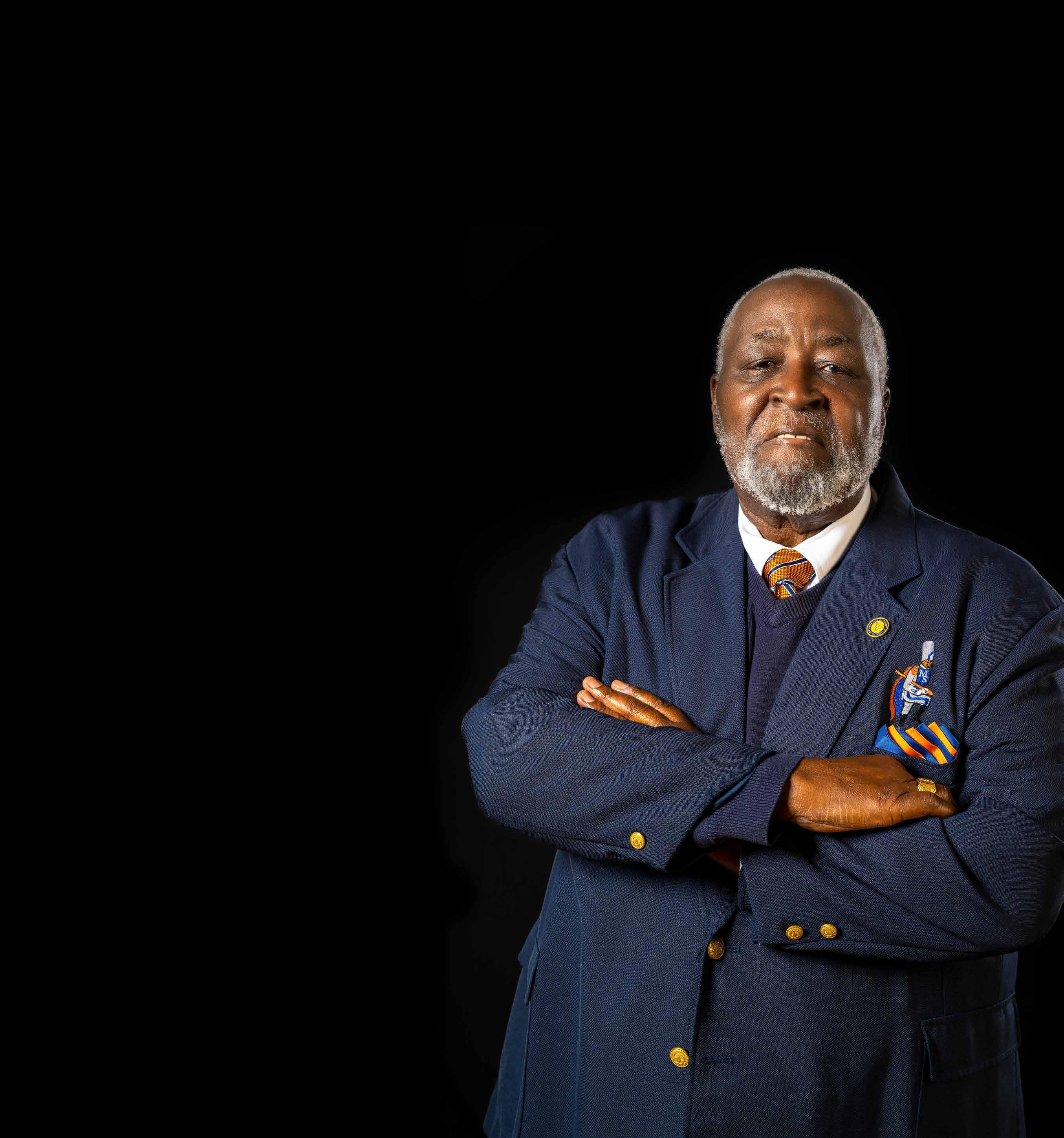 BY B. DENISE HAWKINS
BY B. DENISE HAWKINS
s
MUSIC — THE UNIVERSAL LANGUAGE — HAS ALWAYS SPOKEN TO Melvin N. Miles Jr., ’73 and ’78, Inside his childhood home on Baltimore’s west side, it began to whisper to him, first from his mother’s lips and later through her beloved showtunes that would waft from the family’s phonograph in the evening.
“My mother loved music,” he says. Although she didn’t play any instruments, “she sang little tunes and was a humongous listener.”
None of this was lost on Miles, the oldest of five siblings and the only one who built his life around music — making it as well as teaching it. After graduating from what was then Morgan State College with his bachelor’s degree, in 1973, Miles never left his alma mater, where he became a revered professor of music and its longest-serving director of university bands. After 49 years, Miles, an institution at Morgan, wrapped up his storied career.
‘Something
Special’
Miles, now 72, was about 8 years old and enrolled in Coppin Elementary School when he learned to be a music maker.
“Like most kids, I wanted to play the drums and be in the school band, but back then, we had to share drums,” he recalls. “I wanted an instrument of my own that I could take home every day.”
With the help of his music teacher, Ruby Gill, Miles surveyed other instrument choices before settling on the cornet, which resembles a trumpet. “It looked like it would be easy to play, with just three buttons. I said, ‘That’s for me,’ ” remembers Miles.
He arrived at Calverton Junior High, a new neighborhood public school, to find a robust music education program he credits with “laying the foundation” for the musician he later became. Miles’ music teacher perceived his promise and potential. But Miles admits he wasn’t certain of himself until he concluded his first trumpet solo, John Morrissey’s “Soliloquy for Trumpet,” at a local student music festival. With the accompanying Calverton orchestra seated behind him, the young trumpeter stood at the front of the stage, in the spotlight, as applause filled the auditorium.
“At that time, I began to think that maybe I was doing something special” and had talent, Miles says. In high school, invitations to play trumpet with Frankie and The Spindles and the Whatnauts, local soul bands, was another affirmation.
MORGAN.EDU MORGAN MAGAZINE, SPRING/SUMMER 2023 10
Achievement
Melvin N. Miles Jr.
Mentors and Music
Calverton was also where Miles met the first of several Black, learned, male mentors and musicians who recognized his talent, touched his life and taught him the language of music. “Chester Rowlette”: today, when Miles speaks the name of his Calverton Junior High band teacher and longtime mentor, it seems to hang in the air like a musical note he wants to savor. “Rowlette was awesome, just awesome. He’s the one who got me interested in writing music,” adds Miles. “I was fortunate to be in the right place at the right time with the right people.”
At Baltimore’s Frederick Douglass High School, Miles met Thomas Henry De Laine Sr., Ph.D., who became his music mentor there. De Laine was also a role model for the educator, guide and trusted friend that Miles became to his Morgan music students.
“Tom always wanted me to be and taught me to be the best trumpet player I could be. I (have) carried that with me throughout my life,” says Miles. “Because of him, I was able to play anything, from classical repertoires to jazz and pop music. That was a heck of a lesson,” adds Miles, who left a spot on his high school football team to learn where music and playing the trumpet could take him.
The summer after graduating from high school, Miles met yet another of his mentors: Reppard P. (“Repp”) Stone, Ph.D., a well-known musician and jazz composer and 1952 Morgan graduate, who lived near Morgan State’s campus, in the Morgan Park neighborhood, and led the music department at Delaware State College, now Delaware State University. Dr. Stone was popular with students for the jazz arrangements he wrote and that the students performed during football halftime shows.
He convinced Miles to study music at Delaware State. For about two years, Miles, the college student, zipped between classes in Delaware, gigs with a Baltimore funk band named The Sound Experience and a side job composing music. He was “having
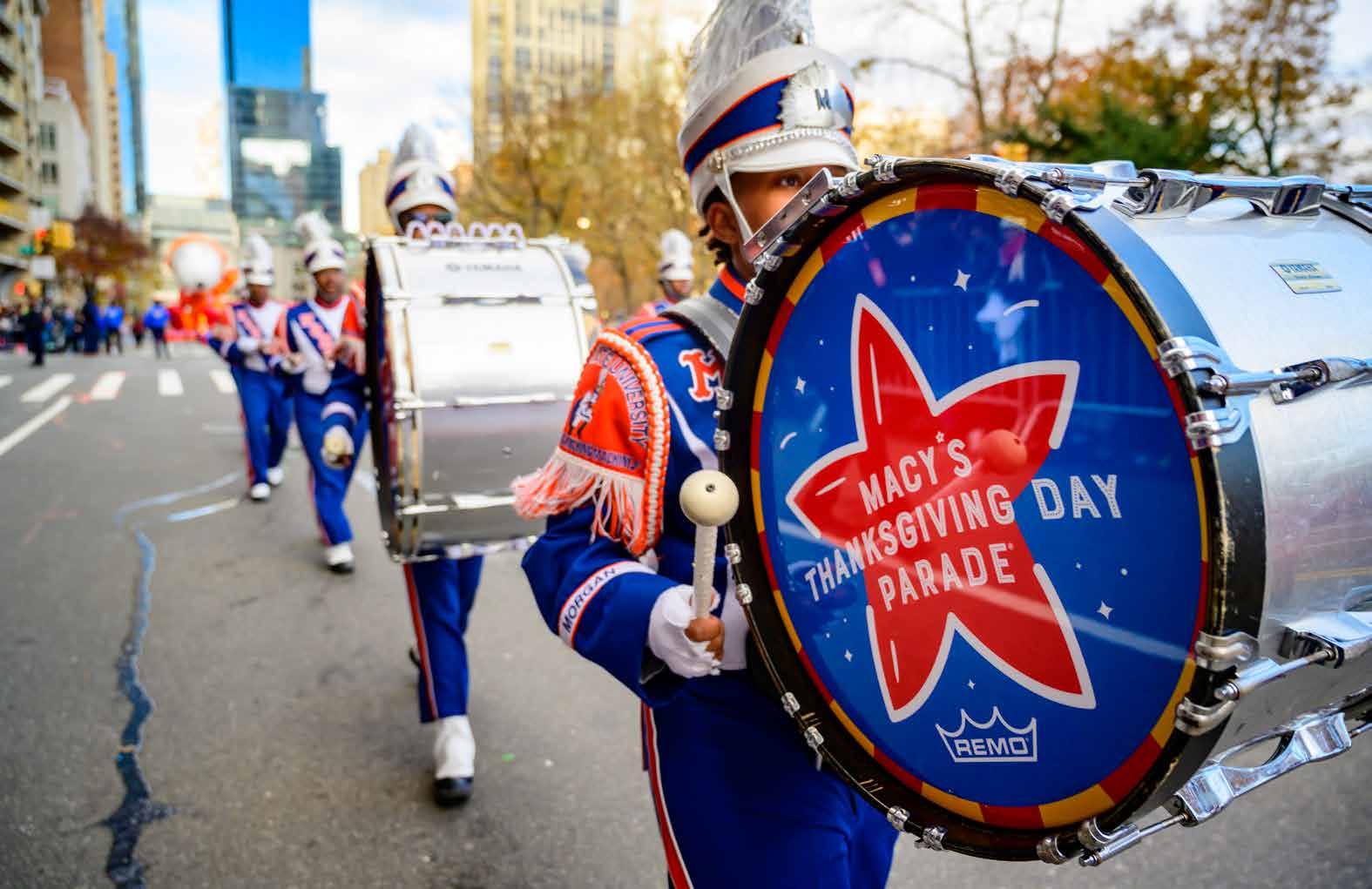
great fun” as he forged his path in the business and realized he could “make decent money” playing his instrument. But what felt more important to Miles was what he was learning outside the classroom — in an unlikely place — about music and being a man. Stone would deliver a kind of masterclass for one during the nearly two-hour weekend commutes the two would make between Baltimore and Dover.
“So, (Stone) is talking about things like music theory, dance harmonies and jazz the whole time we’re in his Volkswagen Beetle. These were intense music lessons,” Miles says excitedly. “At the time, he was working on a doctorate in music composition at Catholic University of America and would pass on to me the things that he was learning. Man, those were absolutely incredible rides.”
Eventually, Miles thought it made more sense to return to Baltimore to be closer to his band, so he transferred to Morgan to study music. When he arrived in 1970, Miles reconnected with his early mentor Thomas De Laine, who was then directing the Morgan band part time. Only two years after Miles joined the band and graduated, his alma
mater hired him to first co-lead and, in later years, lead it. That was in 1973.
Building a Legacy
Miles spent the next 49 years at Morgan, teaching music and directing the University’s six bands, including the MSU Symphonic Winds, Concert Band, Jazz Ensemble, Jazz Combo, Pep Band (a.k.a. the “Bear Band”) and “Magnificent Marching Machine” marching band. Under his direction, the renown of these musical groups expanded over the years, with their performances across the country: before President Barack Obama at the White House, in the Macy’s Thanksgiving Day Parade, at the 147th Preakness and at the Monterey Jazz Festival, to name a few. Miles also added a Master of Arts in Music Education to his resume, earning the degree at Morgan in 1978, and was awarded an honorary Doctor of Fine Arts by his alma mater last December, during Morgan’s Ninth Fall Commencement Exercises, at Hill Field House, on campus.
The hours spent preparing and practicing, and the time on the road, writing arrangements and directing from the bandstand, were exhilarating
Continued on page 12
11 MORGAN MAGAZINE, SPRING/SUMMER 2023 Continued on page 12 RESOUNDING A MUSICAL TREASURE
I got up every day my feet hit the floor, to make a difference in students’ lives. It’s always been about the students.”
‘‘
— Melvin Miles Jr.
Continued from page 11
but also grueling, Miles admits, especially during football season, when the work sometimes continued seven days a week. Still, he did not miss a beat when it came to his students, his legacy.
“I got up every day my feet hit the floor, to make a difference in students’ lives. It’s always been about the students,” says Miles.
Miles’ legacy at Morgan is nothing short of legendary. Among his long list of credits for compositions that have provided the soundtrack for decades of memorable MSU moments, there is one that ranks first for many Fair Morgan faithful: “We Are the Bears,” an arrangement by Miles, composed with his sons Jarrett and Jermaine, remains a consummate Bears gameday favorite.
In 2022, amid a pandemic, Miles retired from Morgan, but not from music. He stepped down just shy of half a century at the University, but Miles says he knew that, at 49 years, it was time to “come home” and “begin to live a little longer with my family and friends.”
From his home in Baltimore’s Lauraville neighborhood, Miles is just beginning to unpack the boxes and memories that filled every inch of his campus office. Sometimes, when he’s standing in his driveway, he can hear the “Magnificent Marching Machine” striking up. To listen, though, says Miles,
MORGAN’S NEW MAESTRO
The retirement of its legendary bands director, Melvin Miles Jr., left Morgan administrators with the task of filling a very large role in University life. But the selection of Jorim E. Reid Sr., D.M.A., as assistant professor, coordinator of instrumental music and the new director of bands in July 2022, after a nationwide search, allayed all concerns. Dr. Reid comes to Morgan with more than 27 years’ experience teaching music and music composition and nurturing the musical talents of young people at various stages of performance aptitude and education. Shaped by the storied HBCU band tradition, Reid served as director of bands and professor of music at Fayetteville State University and, before that, as assistant director then director of bands for 14 years at North Carolina Central University, before answering the call to join the Bears. He earned his bachelor’s degree in music at Florida A&M University and holds a master’s
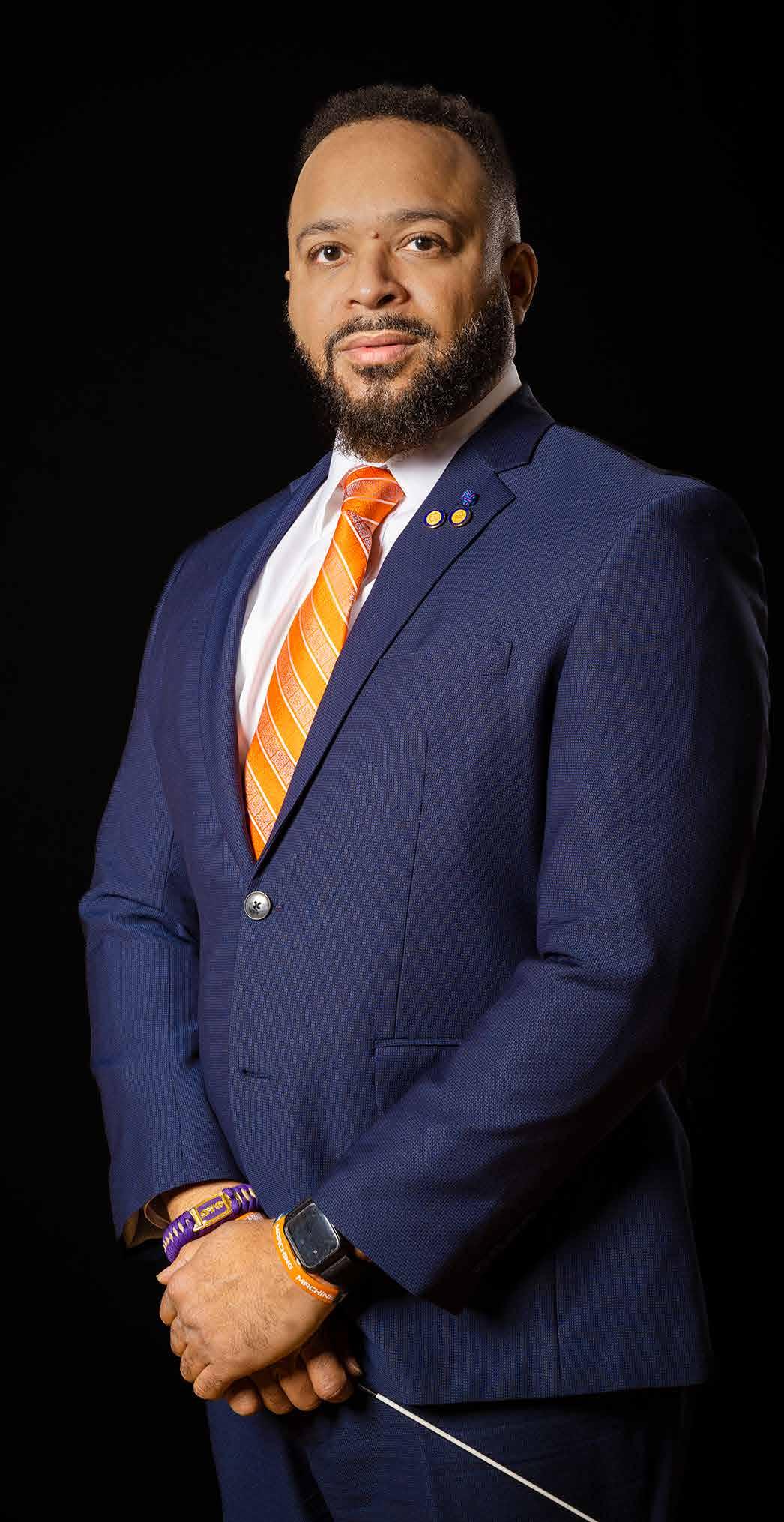
degree in music education from Florida State University and a Doctor of Musical Arts from Boston University.
“It is an honor to take on a storied band program built by the dedication of Mr. Melvin Miles,” says Reid. “His nearly 50 years at Morgan have established a solid tradition of musicianship and a solid reputation for high-quality performing ensembles. I will make every effort to ensure that Morgan’s legacy of unsurpassed band performance and achievements is always honored and continued.” n
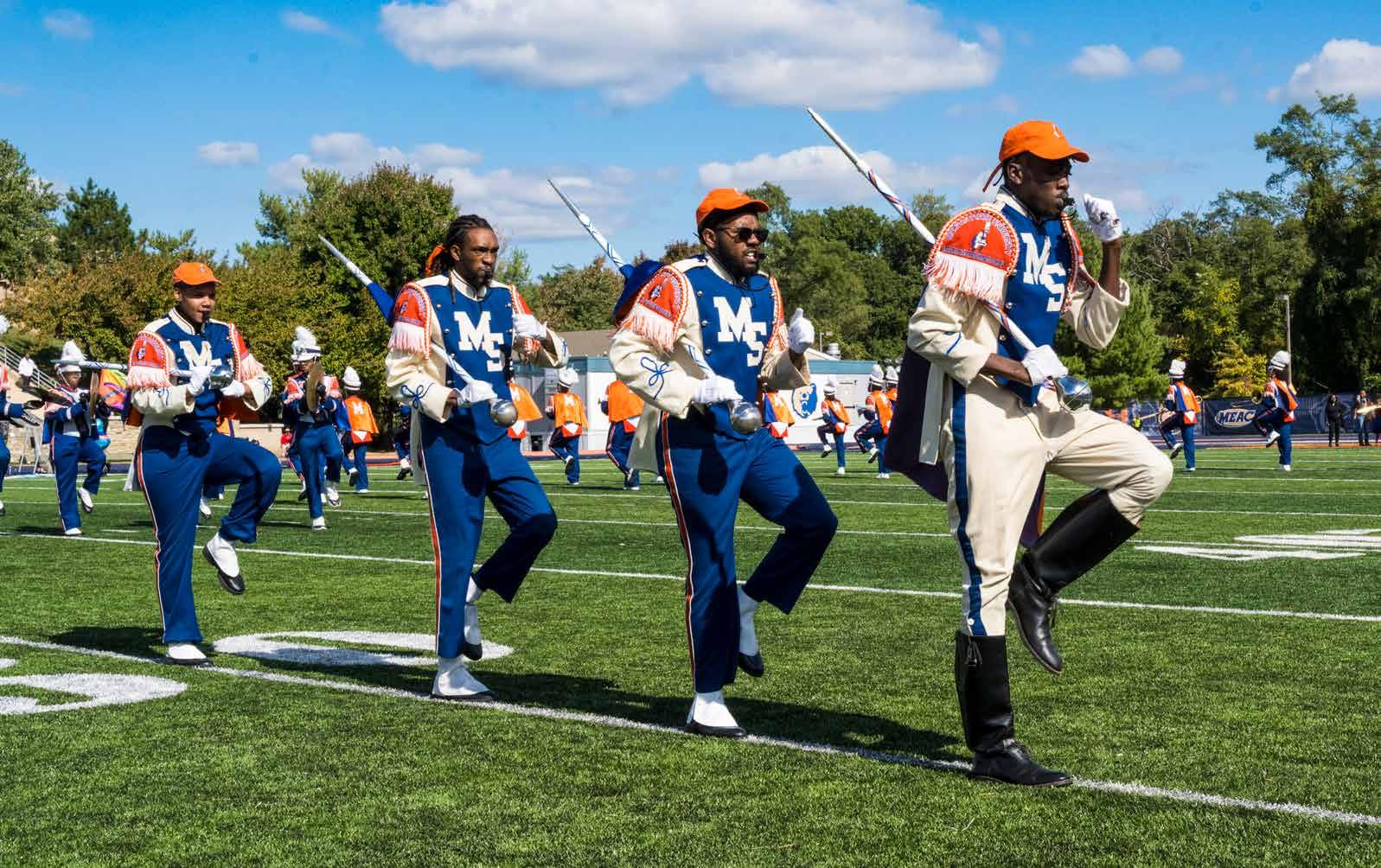
MORGAN.EDU MORGAN MAGAZINE, SPRING/SUMMER 2023 12
Jorim E. Reid Sr.
UNPRECEDENTED GROWTH
Morgan Breaks Its Student Enrollment Record, Reaching 9,101 Last Fall
BY FRANK MCCOY
BALTIMORE’S FRIGID DECEMBER
2022 weather was a visceral shock to Kirston Chambers, 19, from Jamaica. By contrast, the Caribbean-born nursing major relished the warm embrace he received from Morgan State University (MSU), as one of the 2,195 members of the Class of 2026.
Chambers is a first-generation college student with no prior familial or personal links to Morgan. A high school nominee for valedictorian, and his school’s elected head prefect, he also applied to Coppin State University, Hofstra University and The State University of New York College at Plattsburgh, before landing at his decision to enroll at MSU, Maryland’s largest Historically Black College or University.
Another first-year Morgan nursing major, Mirical Solana Brooks, 18, grew up and attended public school in suburban Philadelphia, where, she says, many of her friends and relatives were Morgan boosters. Brooks — like Chambers, a high school valedictorian nominee and first in her family to attend college — turned down admission at Spelman College, Florida
A&M University, Howard University and North Carolina A&T State University to matriculate in Baltimore City at the National Treasure as a member of MSU’s largest-ever incoming class.

More than 1,494 master’s degree and doctoral students joined Chambers, Brooks and the other undergraduate scholars late last summer to bring Morgan’s total Fall 2022 enrollment to 9,101, an all-time high and a 7.5% increase over the Fall 2021 total, which itself was a record number at the time. The 415 transfer students who chose MSU was a significant boost to the statistics.
So why is the student body of Maryland’s preeminent public urban research university experiencing unprecedented growth during a time of declining enrollment in U.S. higher education in general? David K. Wilson, Ed.D., Morgan’s 10th president, believes that MSU, which he has led since July 2010, has become a high-demand destination by creating an unmatched academic and extracurricular experience.
“Our motto is ‘Growing the Future,
Leading the World,’ and to lead the world, you have to understand it,” Wilson says. “Morgan listened to the national conversations about the future of work and how colleges must have degree programs, from undergraduate through Ph.D.s, that have both the intellectual probity and the skill foundation that the world market is seeking.” Toward those ends, he adds, Morgan has redesigned its curricula by creating important and societally relevant new degree programs — more than 30 in the past two years. “Listening to the market means our 2026 class will study, compete and excel in areas such as artificial intelligence, cloud computing and mechatronics engineering, a blend of mechanics, electronics and computing.”
“Morgan is one of the few HBCUs that is so strong in so many academic disciplines, including social work, STEM and business,” Wilson adds. “There are about 1,000 students within MSU’s honors college, about the equivalent of a small liberal arts college.”
To convey its knowledge to the students effectively, Morgan continues to recruit and retain world-class
Continued on page 14
13 MORGAN MAGAZINE, SPRING/SUMMER 2023 UNPRECEDENTED GROWTH Trends
s
EXPANSION
Continued from page 13
professors across the academic spectrum for its racially, ethnically and culturally diverse faculty, Wilson says: “At Morgan, incoming students learn quickly that our high-quality faculty will lead, teach and nurture them.” The University also provides ample support for those educators in their work. The MSU Center for Innovative Instruction & Scholarship, for example, assists faculty, staff and graduate teaching assistants in creating innovative and active learning environments and producing collaborative scholarship on teaching and learning.
Preparation of students for the future of work extends beyond the classrooms and laboratories, offering them multiple opportunities to expand and deepen their skills. The MSU Center for Career Development provides Morgan students and alumni with career assessments, counseling, experiential learning opportunities, a career resource center and more, to move them to success in the global market.
In addition to their guided exploration of Morgan’s expanded domain of scholarship and research, “prospective students will see themselves living and studying in an
expansive green academic oasis that includes nearly $1 billion in capital improvements,” Wilson says. “There are cranes everywhere, new buildings, and work recently done or underway on legacy facilities.”
Intentional Growth
The historic increase in Morgan’s student enrollment as a result of these changes was intentional. In fact, it’s a stated objective of Morgan’s 2021–30 strategic plan: “Transformation Morgan: Leading the Future,” calls for Morgan to “Increase enrollment to 10,000 by Fall 2030, through robust online offerings and aggressive recruitment and marketing initiatives.”

Before its recent enrollment push, Morgan focused mainly on the northeastern U.S. for its student recruitment and marketing. Since being installed as Morgan’s president, Wilson has been a guiding voice in the intentional, incremental push to expand the University’s outreach for prospective students in the U.S. and beyond. Accordingly, MSU’s Office of Undergraduate Admission and Recruitment looked more broadly, establishing an office in Chicago to
begin recruiting in Illinois and nearby states, and has made plans to embed recruiters in the U.S. Southeast as well as California and other western states. Another successful change made use of information technology. During the height of the COVID pandemic, “Morgan’s admissions campaign for prospective Generation Z students was digital and virtual, as in-person campus tours and college fairs were not possible for the young people being courted,” says Kara Turner, Ph.D., the University’s vice president for Enrollment Management and Student Success.
Dr. Turner, another key driver of Morgan’s enrollment expansion, points to a number of ‘macro’ factors that have boosted Morgan’s numbers.
“There is more interest in HBCUs right now because of where we are as a nation politically and the impact of the Black Lives Matter movement, police brutality and the murder of George Floyd,” says Dr. Turner. “There is also a desire on the part of students to attend a university and be on a campus where they are physically, psychologically and emotionally safe.”
“Prospective students, and their supporters, have also seen the impact of
MORGAN.EDU 14
MORGAN MAGAZINE, SPRING/SUMMER 2023
David K. Wilson, Ed.D., Morgan’s 10th president, believes that MSU has become a highdemand destination by creating an unmatched academic and extracurricular experience.
There is more interest in HBCUs right now because of where we are as a nation politically…. Prospective students, and their supporters, have also seen the impact of prominent Black HBCU graduate leaders like Vice President Kamala Harris and (political activist) Stacey Abrams.”
— Kara Turner, Ph.D., MSU Vice President for Enrollment Management and Student Success
prominent Black HBCU graduate leaders like Vice President Kamala Harris and (political activist) Stacey Abrams,” Turner adds. Among Morgan’s own are U.S. Rep. Kweisi Mfume, ’76, journalist April Ryan, ’89, acclaimed filmmaker David E. Talbert, ’89, and journalist and author William C. Rhoden, ’73, who are proud HBCU graduates of national renown.
“Morgan State University is in a position of accelerating ascendancy and accomplishment,” says Turner. “Outsiders and Morgan alumni see its campus and all the wonderful things happening on it.”
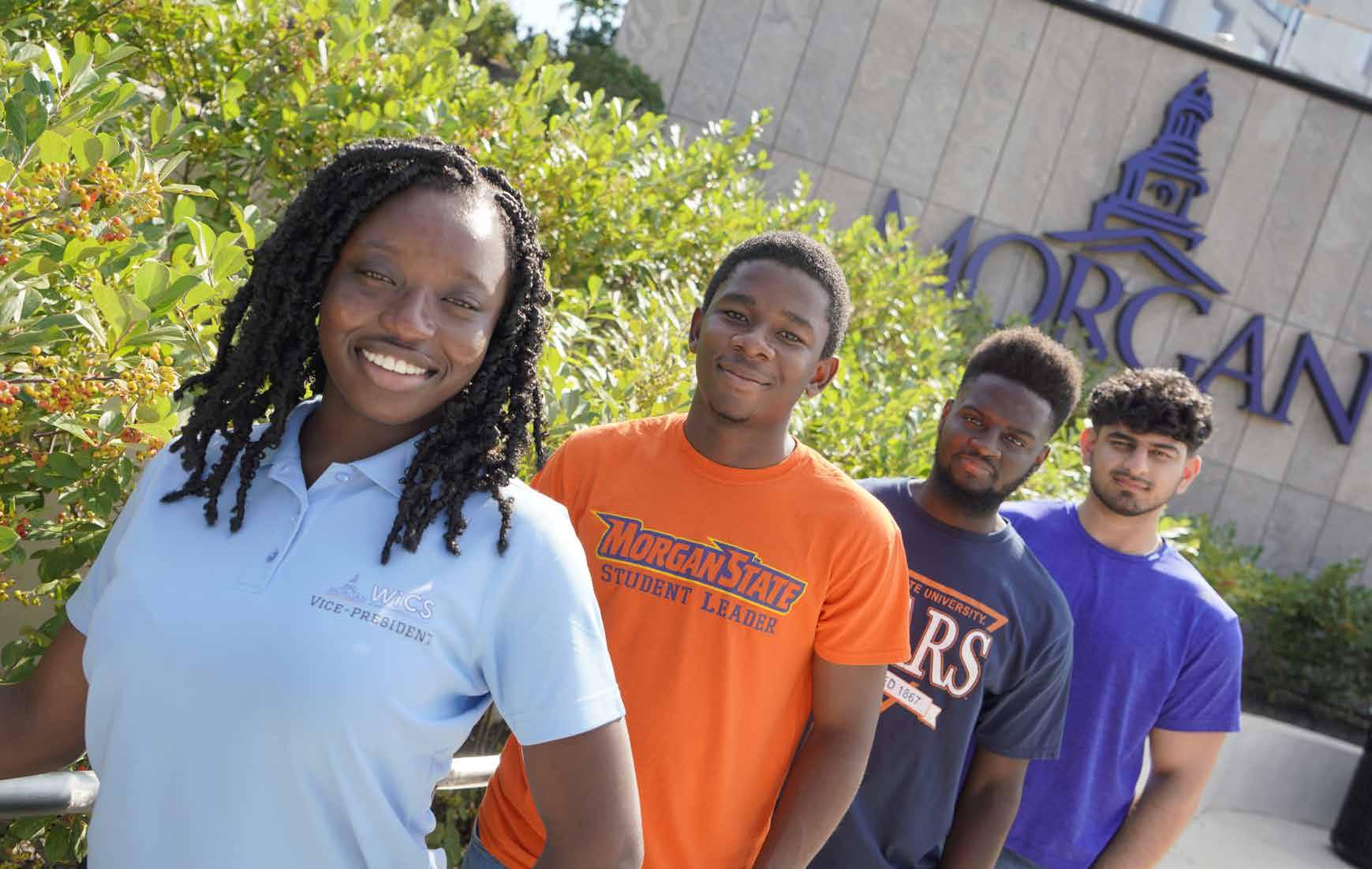
As for Morgan-specific factors expanding the student body, Turner, like Morgan’s president, points to the University’s expanded academic offerings and the historic surge in financial investment in the institution, which began with a $40-million unrestricted gift from author and
philanthropist MacKenzie Scott, in December 2020, and continued in February 2021 with a $20-million commitment from Morgan alumnus Calvin Tyler and his wife, Tina. Turner says the recent funds have helped Morgan increase “student success as well as advance research and enhance investments in other mission-focused priorities and initiatives.”
Virtually Impressed
Kirston Chambers was one of the many student prospects who was virtually impressed with a digital tour of Morgan last year, before deciding to enroll. He says another key MSU attraction was its reasonable tuition for a quality education, and the relatively low impact on his family’s finances. Chambers’ dad is a chef, and his mom is self-employed. He received an MSU institutional award for his first
semester, last fall.
Other allures for the nursing major included “wanting to be around people like myself, in an environment where I could feel home away from home. Morgan has a holistic view of me.”
Mirical Solana Brooks says her Morgan experience has exceeded the high expectations she formed during her virtual preview. These days, she is reaching out to explore student clubs and social events and says, “It is now so easy to make friends.”
President Wilson’s message to the record-breaking Class of 2026 is that they made the right choice in joining Morgan.
“Morgan State University is a pathway to greatness,” he says. “A Morgan foundation fortifies student character. Its alumni never question their capacity when they enter graduate school or a job. Morgan alumni can match anyone in the world.”
15 MORGAN MAGAZINE, SPRING/SUMMER 2023 UNPRECEDENTED GROWTH
n
‘‘
SHAW-RAISED, MORGAN MADE
High-Achieving Alum Travis Mitchell Proves HBCUs Matter
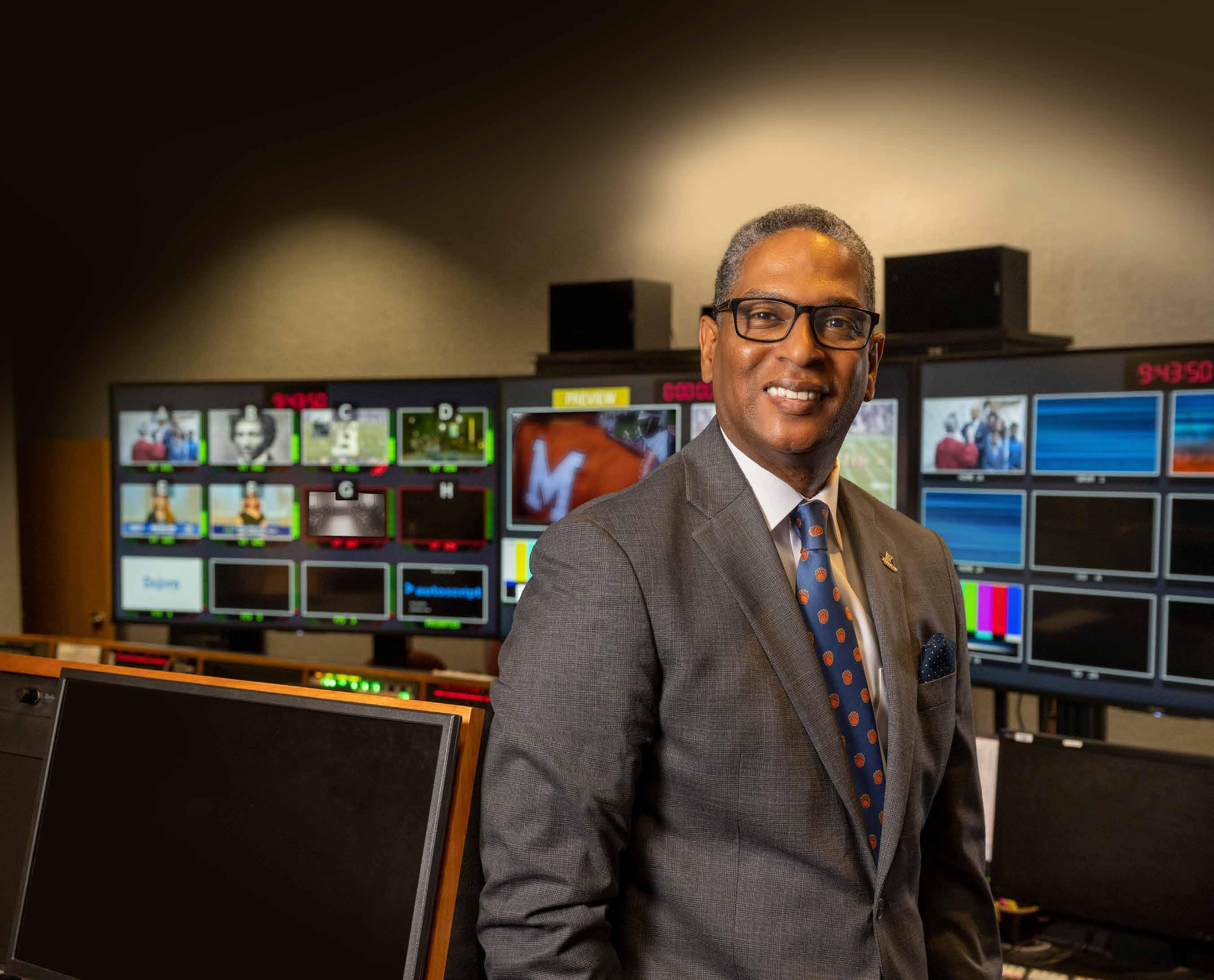 BY CHRISTINA ROYSTER, MSU CLASS OF 1993
BY CHRISTINA ROYSTER, MSU CLASS OF 1993
WHEN MORGAN STATE UNIVERSITY alum Travis Mitchell ’92 was in preschool, the campus of Shaw University in Raleigh, North Carolina, was his playground. His mother, uncle and aunt worked on campus, so he often played there after school while waiting for his mother to finish work. However, as he continued to grow in years, he also grew in awareness of the value of growing up on an HBCU campus, feeling affirmed by the largely African American group of students, faculty and staff members he knew and
by the unwavering support the alumni showed the school. In many ways, he says, it became his “Wakanda.”
“When it came time for me to choose a college, I did so as an athlete, a basketball player. I was also an honors student with a solid GPA and SAT scores and many AP courses on my transcript,” Mitchell says. “I had plenty of colleges recruiting me and did not face the Jim Crow restrictions that my parents had.”
However, because of his connection with Shaw University, the type of college experience he desired was
already defined. “I was in search of an HBCU experience,” albeit a little farther from home.
That was when Mitchell’s father, a Shaw Hall of Fame player and coach, introduced him to Morgan State University’s basketball coach, Nat Frazier, who recruited him to Morgan with an offer to play basketball. He also received a full academic honors scholarship.
When his basketball career at Morgan ended early, he became an assistant editor and later editor-in-chief of the
MORGAN.EDU MORGAN MAGAZINE, SPRING/SUMMER 2023 16
IMPACT Profile s
Travis Mitchell
Today, Mitchell serves as senior vice president and chief content officer for Maryland Public Television, where he is the highest-ranking African American in the organization’s more than 50-year history.
Thirty years ago, it was students who — with faith in Morgan and a belief that HBCUs matter, during a critical time in Morgan’s history — planted seeds of possibility that have manifested the artifacts of their vision.”
student newspaper, The Spokesman. In this capacity, he says, his identity expanded from student editor to student leader, which contributed to the development and growth of Morgan State University as a whole.
Catalyst for Change
“While covering a protest being planned by student leaders across campus to address frustrations with poor dormitory conditions and safety concerns, among other issues, I was drafted to be a spokesperson to present our case to the school administration and the public,” Mitchell says. “We discovered quickly that most of the issues we faced as Morgan students stemmed from historic underfunding of Morgan by the State of Maryland,” a fact recently acknowledged by the Maryland General Assembly’s historic $577-million settlement with the state’s four public HBCUs.
So Mitchell became the spokesperson for about 200 students in a weeklong sit-in in Morgan’s administration building. Together, the students began direct negotiations with then Maryland Gov. William Donald Schaefer and mobilized stakeholders from Morgan, Baltimore and the entire state to support their cause, through massive rallies of thousands of people in Annapolis. They also held a hunger
strike and called for the immediate support by the State of the 25-year capital improvement plan that had already been submitted by MSU President Earl S. Richardson.
Little did he know that the studentled protest of 30 years ago would be the catalyst for change that resulted in more than $1.5 billion in capital improvements at Morgan since then.
Mitchell says that, “Thirty years ago, it was students who — with faith in Morgan and a belief that HBCUs matter, during a critical time in Morgan’s history — planted seeds of possibility that have manifested the artifacts of their vision.”

Full Circle, With Honors
Today, Mitchell serves as senior vice president and chief content officer for Maryland Public Television, where he is the highest-ranking African American in the organization’s more than 50year history. Building on 25 years of media marketing and management experience, including recent roles as executive vice president and chief operating officer of the Atlanta-based Black Family Channel and chief content officer for UNC-TV in North Carolina, where he co-executive produced the Emmy award-winning documentary “Shaw Rising,” which chronicles the history of Shaw University as the oldest
HBCU in the South. Mitchell came full circle to his familial ties with Shaw in 2021, when he was appointed to the university’s Board of Trustees and received an honorary Doctor of Humane Letters, in recognition of his more than 25 years of service to the community as a media and nonprofit organization executive.
Now at the helm of Maryland Public Television’s Content Division, Mitchell has shepherded innovative initiatives such as HBCU Week and the production of MPT’s acclaimed national PBS documentaries “Harriet Tubman: Visions of Freedom” and “Becoming Frederick Douglass.”
Mitchell’s daughter, Trae, is a Spring 2023 graduate of MSU, with a Bachelor of Science in Multimedia Journalism from the School of Global Journalism and Communication. Like her father once did, Trae Mitchell worked for The Spokesman newspaper, serving as managing editor.
When asked about the impact of HBCUs on his life, Travis says, quite simply, “No Shaw. No Morgan. No me! Like the anthem of our student protest says, ‘All of my love, peace and happiness I am going to give to Morgan!’ ” n
17 MORGAN MAGAZINE, SPRING/SUMMER 2023 SHAW-RAISED, MORGAN MADE
‘‘
— Travis Mitchell, MSU Class of 1992
Legacy: Travis Mitchell and daughter, Trae, MSU Class of 2023
SUPPORT
CECIL FLAMER ‘PAYS IT FORWARD’ TO MORGAN AND BEYOND
s
MORGAN STATE UNIVERSITY IS ONE OF Baltimore City’s most powerful institutions, and it owes that status largely to the driving force of dedicated alumni who support its mission with their time, talent and treasure — alumni like Cecil Flamer, ’69. Flamer is a financial expert, philanthropist and avid supporter of education who has given back to his alma mater generously for decades. His giving has increased over the years through various projects, the most recent being the Food Resource Center, a facility launched at Morgan in 2018 to distribute food to students free of charge and educate members of the Morgan community about
healthy food-related strategies and methods, such as couponing, meal prepping, familiarity with nutritional value and proper food selection. The Center’s mission is to prevent hunger and food insecurity, which are major problems on college campuses nationwide. Since its inception, Morgan’s Food Resource Center has helped countless members of the University community, distributing food items and valuable advice.
Since graduating from Morgan with his bachelor’s degree in Business Administration in 1969, Flamer has shown an uncanny ability to identify needs on campus and provide funding
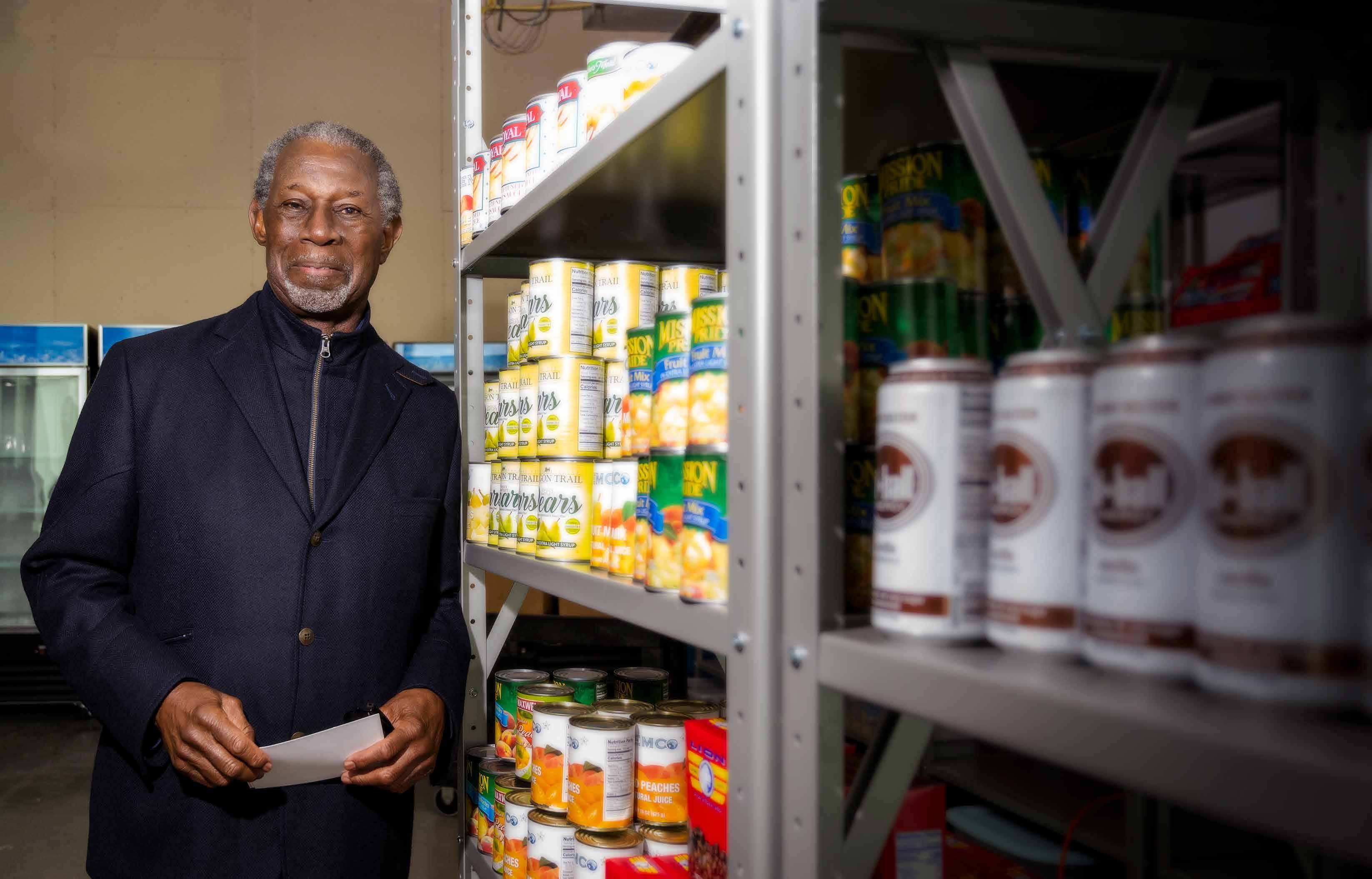
MORGAN.EDU MORGAN MAGAZINE, SPRING/SUMMER 2023 18
BY JESSICA DORTCH Donor Profile
Cecil Flamer
and funders to meet those needs. In the case of the Food Resource Center, he says, his foundational work and ongoing support stemmed naturally from his personal experiences with food insecurity during his time as a student at Morgan. Although he was awarded scholarships and other financial assistance, and held a job near the campus at The Hecht Company department store, he still needed help.
“That wasn’t always sufficient enough to make sure I didn’t miss a meal or that I had everything I wanted to eat,” he explains.
Strong Foundation
Flamer knew the importance of food strategies all too well. A native of Maryland’s Eastern Shore, he and his four siblings grew up in rural Caroline County, where his father supplemented his income by raising cattle and crops. His mother kept a garden so that, although they could go to the supermarket, her family of seven would
always have more than enough to eat.
“The values that were instilled in me started with family,” Flamer reflects.
Flamer knew his career path early on. A class assignment given to him when he was in middle school led him to discover accounting.
“I didn’t know any CPAs (Certified Public Accountants), but I decided that’s what I wanted to be,” Flamer recalls.
The more research he did, the more he learned about the promising prospects of the accounting profession and the growing demand for its services. To top it off, that career path led to six-figure salaries — even in the 1960s — making it all the more appealing to a young man with big dreams and a strong work ethic.
For more than 50 years, Flamer has had a successful career in finance at two notable companies: global CPA firm Ernst & Young and Brown Capital Management, Inc., a firm founded and led by Eddie C. Brown, an African American entrepreneur and philanthropist. Although Flamer
donates using his own funds, his ability to leverage those funds with his employers has been key to mobilizing large gifts. Through the matching gift program at Ernst & Young, Flamer was able to have the company donate to the same causes also, which inspired him to initiate a similar program at Brown Capital Management.
Expansive Philanthropy
Flamer’s generosity extends beyond the campus of Morgan State. Among the more well-known organizations he champions are the American Cancer Society, which he supports in honor of his late sister, who lost her battle to breast cancer in 2009.
His other philanthropic work is on full display in Baltimore City: he chaired the board of the Pratt Library, earning him a children’s reading room dedication; was the founding chair of the Arts Everyday program, which helps reintegrate the arts into middle schools in the city; and, most recently, partnered with Roberta’s House to fund its updated facility, to which he donated pieces from his personal art collection to be displayed.
When asked how he’d like to be remembered, Flamer joked, “...that I knew good wine.” The modest, financially refined MSU alum doesn’t consider his own place in history. He believes that those in a position to help should.
“I would hope my legacy would be evident and apparent in the Food Resource Center…,” Flamer says. “(I wanted it to) be so successful that it would be a model for other universities. Maybe it will inspire others to hop in and do as much as or more than I have done.” n
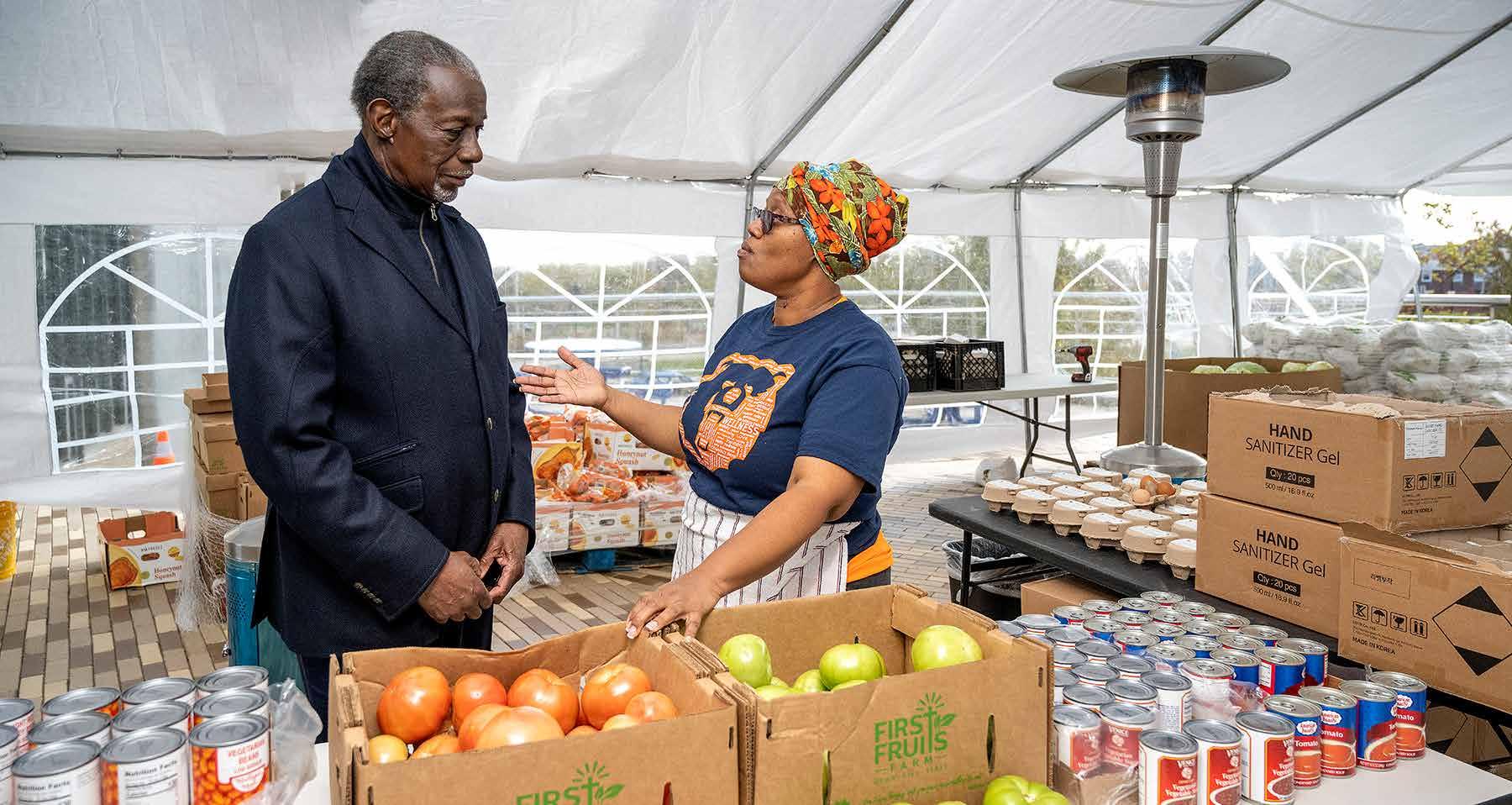
19 MORGAN MAGAZINE, SPRING/SUMMER 2023 CECIL FLAMER ‘PAYS IT FORWARD’
I would hope my legacy would be evident and apparent in the Food Resource Center…. (I wanted it to) be so successful that it would be a model for other universities.”
‘‘
— Cecil Flamer, Morgan Class of 1969
Since graduating from Morgan with his bachelor’s degree in Business Administration in 1969, Flamer has shown an uncanny ability to identify needs on campus and provide funding and funders to meet those needs.
DREAMS IN FLIGHT
BY ERIC ADDISON
HOW REAL IS MORGAN STATE University’s (MSU’s) Core Value of “Diversity”? Let’s just say it’s real enough for the renowned institution’s big tent to shelter not one but two top students from very different backgrounds who are both pursuing their childhood dreams of piloting commercial aircraft.
Bria Bailey is a Spring 2023 Bachelor of Science in Business Administration graduate, born and raised in Baltimore City.
“When we would go on our family vacations, the number one thing I would look forward to was being in the airport,” Bailey recalls. “Looking at the planes take off, looking at them land, I was just really fascinated by the mechanics of it all — the grace of this thousand-ton machine flying in the sky….”
Those experiences are the root of her aspiration to become a pilot, she says. During her junior year of high school, she developed Plan A: to enroll in the Professional Pilot Program at Delaware State University. Disappointed when she learned the program was beyond her financial budget, she enrolled in the Granville T. Woods Scholars Program at Baltimore City Community College, “a great decision” that led her to Morgan, she says. “It’s a partnership between that program and Morgan where if my GPA stayed above 3.5, I got to attend Morgan with a full ride.”
Bailey held a 4.0 grade-point average as a Clara I. Adams Honors student in the Earl G. Graves School of Business and Management, gaining knowledge about entrepreneurship. She also made it a goal to fly twice a week from Martin
State Airport as a student pilot, in preparation for her first solo flight.
Bailey was active in a number of campus organizations and says she’s benefited greatly from her mentoring by Sisters of the Skies, “an organization of Black female pilots who are committed to supporting future Black aviators through mentoring, professional development, outreach and scholarships.” The group also awarded her $15,000 in scholarships to help fund her flight training.
Bailey says she’s determined to help increase the representation of Black women pilots in the aviation industry: “As a young Black woman in America pursuing a career where we’re represented by so few — It’s less than half of 1% of all pilots who are Black women — it really just motivates me to

MORGAN.EDU MORGAN MAGAZINE, SPRING/SUMMER 2023 20
ASPIRATION
s
want to move forward in this journey, being able to add to that number and reach out to Black kids, young Black adults who may be interested in pursuing something like this.”
‘The Greatest Moments’
Daniel Harrison’s passion for piloting began like Bailey’s, in an airport. As a five-year-old, the youngest of four siblings, growing up in Ocho Rios, Jamaica, he got to walk through an airplane during a school field trip. The career goal he set for himself at that moment still endures.
After beginning his aviation training in Jamaica, Harrison, now a senior Electrical and Computer Engineering
major at MSU, felt compelled to change course when the flight school he’d chosen had a plane crash.

“Ultimately, after I graduated high school, my parents and I decided I shouldn’t go there,” he says. “My aunt (Denise Jarrett, Ph.D.), who actually works (as an English professor) at Morgan State, said I should look at opportunities here at Morgan or elsewhere in the U.S. So my family decided to take the financial risk, and I applied for a student visa.”
Harrison’s visa got him to the Community College of Baltimore County, where post-9/11 rules prevented international students from studying aviation. So he earned his associate’s degrees in general studies and science and transferred to Morgan in 2021, where he’s earned a 3.94 GPA and is serving as an academic tutor for the University’s Office of Residence Life and Housing. He spends his weekends moving toward his long-term goal, in flight training at Middle River Flight Center.
Last summer, Harrison took advantage of the opportunity offered by MSU Physics Lecturer Richard Damoah, Ph.D., to join NASA’s Student Airborne Science Activation (SaSa) internship program. Riding on a NASA plane collecting atmospheric data for science projects, he says, produced “a lot of the greatest moments.” The coming summer promises more great opportunities: Harrison has accepted a 10-week research internship at Cornell University’s Nanoscale Science and Technology Facility and a study abroad experience in France.
His aunt’s strong recommendation of Morgan was on target, says Harrison.
“I can’t get these opportunities anywhere else, to be honest,” he says. “I had other choices…but Morgan was far superior to the rest…. If there is any way I can give back, I’ll definitely keep Morgan at the forefront of my mind.”
Bailey is likewise grateful to Morgan and has plans to stay connected with her alma mater.
“The support and encouragement, the opportunities that I’ve gotten from Morgan…have been huge. Those have definitely helped me learn to advocate for myself and step out of my comfort zone,” she reports. “Through service and mentoring, I look forward to giving back to the Morgan State community.” n

21 MORGAN MAGAZINE, SPRING/SUMMER 2023 DREAMS IN FLIGHT
Bailey says she’s determined to help increase the representation of Black women pilots in the aviation industry.
Bria Bailey
I can’t get these opportunities anywhere else, to be honest. I had other choices…but Morgan was far superior to the rest.”
‘‘
— Daniel Harrison, MSU Class of 2024
Daniel Harrison
BY TORY PARRISH


New Morgan Research Centers Address Inequities in Baltimore and the Nation
Equity In Quality
Life Impact MISSION
Pursuing
Of
MORGAN STATE UNIVERSITY (MSU)
is known as a trailblazer in high-level research, but the Baltimore institution of higher learning is making major strides in new areas, toward improving the educational, health and economic outcomes of residents in Maryland and beyond.
Of Morgan’s more than 20 academic and research centers, which fall under different schools and colleges at the University, four were started since 2021 to conduct research and partner with community groups to address inequities that represent quality of life deficits, particularly for Black and Latino populations: the Center for Urban Health Equity (CUHE), the Center for Data Analytics and Sports Gaming Research (DASGR), the Center for Urban Violence and Crime Reduction and the National Center for the Elimination of Educational Disparities (NCEED).
“All these centers sprang from different schools at Morgan, and they are reflective of Morgan’s mission to be an anchor public research university here in Baltimore,” says Patricia Williams-Dockery, Ph.D., MSU’s associate vice president for Academic Affairs.
The four centers will provide opportunities for faculty who are already doing research at Morgan
to access more resources to elevate their work and make a greater impact on their fields of study, Dr. WilliamsDockery says. Three of them — the Center for Urban Health Equity, the Center for Data Analytics and Sports Gaming Research and the Center for Urban Violence and Crime Reduction — were among five Morgan research centers that were launched with more than $11 million annually in State funding.
A synopsis follows of the work the four research centers will do:
Center for Data Analytics and Sports Gaming Research
The prevalence of gambling disorders in Black communities is double that in white communities, several studies have found. After Marylanders voted to legalize sports betting in the state in 2020, Morgan President David K. Wilson and Ali Emdad, Ph.D., associate dean of the Earl G. Graves School of Business and Management at Morgan, submitted a proposal to the State for funding to create the University’s Center for Data Analytics and Sports Gaming Research, Dr. Emdad says.
“We wanted to do research on the disastrous effects of gambling in minority communities,
disproportionate gambling problems compared to other communities,” says Emdad, who reports that the State approved funding for the center last July.
DASGR’s research will also include study of opportunities for minority entrepreneurship in electronic sports video gaming, called “esports.” The center will also use data analytics to study sports outcome and prediction models and will examine health issues related to sports gaming and esports, and the impact of laws on sports gaming and esports activities.
“The other aspect was not only would Morgan students be informed about data analytics, but other HBCUs in the state of Maryland can benefit from the courses and workshops and other events that we organize for informing the HBCU community,” Emdad says.
The center already is partnering with the Maryland Center of Excellence on Problem Gambling at the University of Maryland School of Medicine on scheduling workshops at Morgan, he adds.
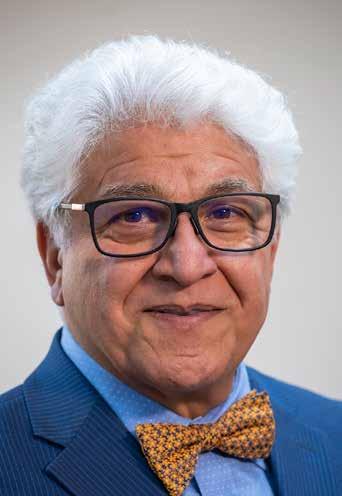
Center for Urban Health Equity
Mental health issues are the most significant health concern in Baltimore’s Black community, and they
Continued on page 24
23 MORGAN MAGAZINE, SPRING/SUMMER 2023 PURSUING EQUITY IN QUALITY OF LIFE
We wanted to do research on the disastrous effects of gambling in minority communities, disproportionate gambling problems compared to other communities.”
‘‘ s
— Ali Emdad, Ph.D., Associate Dean, Earl G. Graves School of Business and Management, MSU
All these centers sprang from different schools at Morgan, and they are reflective of Morgan’s mission to be an anchor public research university here in Baltimore.”
‘‘
— Patricia Williams-Dockery, Ph.D., MSU’s Associate Vice President for Academic Affairs
influence choices that affect physical health, such as decisions about food consumption and drinking, says Kim Dobson Sydnor, Ph.D., ’97, dean of Morgan’s School of Community Health and Policy and director of the Center for Urban Health Equity. CUHE, which started in 2021, aims to connect faculty with community members and organizations to engage in research to improve the health of Baltimore’s residents, and to build a network of resources to give residents support, Dr. Sydnor says.
“But we are really wanting to do the work that we think resonates with community,” she continues. “(It) should be driven by the community to some extent, because the center’s mission as a state-funded entity really is to have an impact on the citizens of Baltimore City, in particular, and then the broader state.”
Housed within Morgan’s School of Community Health and Policy, CUHE has three full-time research faculty members and one part-time research scientist on staff, Sydnor says. Initial financial support included $500,000 from the $40 million that philanthropist MacKenzie Scott gave the University in 2020, and an annual $3-million appropriation commitment to Morgan’s operational budget from
the State of Maryland.
One of the center’s initiatives involved setting aside $100,000 from the Scott donation to use as seed money for 12 community health and wellness projects based on work the center has done with a partner group, the nonprofit Family League of Baltimore, Sydnor says. The league managed the 12 grants provided to individuals and organizations.
Within five years, the center should be a fully functioning entity that runs data analytics, trains post- and predoctoral students, engages in solid collaboration around heath equity work and conducts research that changes policies and communities, Sydnor says.
“We want to make sure that health is a right,” she says, “not a perpetual fight.”
Center for Urban Violence and Crime Reduction
Policing is not the only answer to reducing or solving crimes in urban areas, says Anna McPhatter, Ph.D., dean of Morgan’s School of Social Work. The Center for Urban Violence and Crime Reduction will look at the broad, complex issues that cause crime: vital work that will involve conducting evidence-based research and collaborating with Baltimore community groups to develop effective
intervention strategies, she says.
The nation has a “history of people doing research in urban communities… that (has) no community input, that (has) no voice at the table with people who have a history, the connectedness, the ownerships, the involvement,” Dr. McPhatter says.

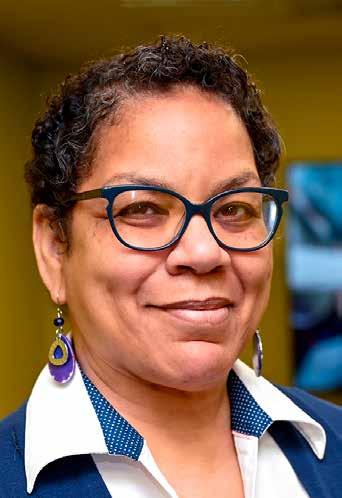
One example of the disconnect between communities and government leaders is the lack of quality early childhood education available in the United States, despite research having found that students who enrolled in these programs went into special education programs at lower rates, went to college at higher rates, earned more money in adulthood and engaged with the criminal justice system at lower rates than those who weren’t enrolled, McPhatter says.
Planned as a multidisciplinary entity, the Center for Urban Violence and Crime Reduction falls under the School of Social Work and will also include research faculty from the School of Education and Urban Studies.
“As social workers, we have a more nuanced understanding of behavior than some other people might,” such as in examining the causalities and ideologies of some social issues, McPhatter says.
The center’s goal is to become
MORGAN.EDU MORGAN MAGAZINE, SPRING/SUMMER 2023 24
Continued from page 23
Dr. McPhatter says the Center for Urban Violence and Crime Reduction will look at the broad, complex issues that cause crime: vital work that will involve conducting evidence-based research and collaborating with Baltimore community groups to develop effective intervention strategies.
Anna McPhatter, Ph.D.
We want to make sure that health is a right, not a perpetual fight.”
‘‘
— Kim Dobson Sydnor, Ph.D., Dean of Morgan’s School of Community Health and Policy and Director of Morgan’s Center for Urban Health Equity
a national model of an HBCU demonstrating groundbreaking work through research, education and training, and to become a clearinghouse for developing new theories and strategies, she says.
The center received funding of $2 million from the State in July 2022 and is in the process of hiring staff, McPhatter reports.
National Center for the Elimination of Educational Disparities
Launched in September 2022, NCEED was created to improve educational outcomes for Black, Latino and economically disadvantaged students in Maryland and nationwide.

“We want this to be a (truly) national center,” says Glenda Prime, Ph.D., dean of Morgan’s School of Education and Urban Studies. “We will certainly be starting in Baltimore and in Maryland, but we are hoping that the things we develop and the approaches that we begin to implement here (can) be scaled…because the problem is a national problem.”
The 2021–2022 Equity Metrics Report for Baltimore County found that socioeconomically disadvantaged students of the county’s public schools were a large portion of the more than
50% who showed “notably lower” rates of reaching reading and math benchmarks than their peers in the school district, The Washington Post reported in October. Among racial and ethnic groups, Black students lagged furthest in achievement, except in the category of kindergarten readiness, the Post reported. The Measure of Academic Progress tests of elementary school math showed that Black students’ pass rate was 21.5 percentage points lower than that of their peers, and the middle school math gap was 20.3 percentage points, the newspaper reported.
Morgan’s National Center for the Elimination of Educational Disparities will focus on more than improving test scores, says Dr. Prime, who adds that the center’s work will aim to reframe conversations around equity and transforming culture in schools. The center will conduct outreach to students’ families and communities to understand how inequities are being experienced and will also conduct research that involves developing interventions, including partnering with schools, to improve the educational attainment of Black, Latino and economically disadvantaged students, says Prime, “so that when we come up with interventions, they reflect the real experiences of teachers in
school and administrators.”
In 2022, President Wilson authorized funding of $100,000 in seed money for the center over three years. NCEED has retained Morgan alumnus Walter Fields to help conceptualize the center, leveraging expertise Fields gained developing a similar program that was successful in New Jersey, Prime reports.
25 MORGAN MAGAZINE, SPRING/SUMMER 2023
PURSUING EQUITY IN QUALITY OF LIFE n
Morgan’s National Center for the Elimination of Educational Disparities will focus on more than improving test scores, says Dr. Prime, who adds that the center’s work will aim to reframe conversations around equity and transforming culture in schools.
PARSING MICROPLASTICS POLLUTION
 BY ERIC ADDISON
BY ERIC ADDISON
Variations on that headline were effective attention-grabbers, even in the crowded news media of the time. But were they factual?
The jury of real scientists is still deliberating that, says Scott Knoche, Ph.D., director of Morgan State University’s (MSU’s) Patuxent Environmental and Aquatic Research Laboratory (PEARL), in Calvert County, Maryland. More certain, Dr. Knoche says, is that, “It’s innately concerning to people, because it’s in the water we drink, the food we eat…. It’s something that is very salient to us. It’s a really important and frightening problem.”
The topic at hand for Knoche and MSU Professor of Biology Chunlei Fan, Ph.D., is the increasingly well-publicized subject of “microplastics” and their incidence in environmental pollution in the United States and around the world. Plastics are the most prevalent types of marine debris found in oceans around the U.S. and in the Great Lakes, according to the National Oceanic and Atmospheric Administration (NOAA).
But research of the human impact of microplastics, defined as pieces of plastic less than five millimeters (.2 inches) in length, is still in its infancy. Four years ago, science educators at Morgan decided to make their historically Black institution a leader in the field.
Dr. Fan, Dr. Knoche and Hongtao Yu, Ph.D., now MSU provost, then dean of Morgan’s School of Computer, Mathematical and Natural Sciences, huddled to find a common research focus for the University’s Biology Department, Physics Department, Chemistry Department and PEARL.
“We wanted to leverage the synergy of all our activities and infrastructure to work on an important, current research topic,” recalls professor Fan, who also serves as director of Morgan’s Bioenvironmental Sciences Ph.D. program. “We decided to target microplastics research.”
“It’s bringing our unique resources to bear to produce some cool research most universities wouldn’t be able to do because they don’t have an asset like PEARL,” adds Knoche.
Morgan’s research of the problem has multiple aims, Dr. Fan reports: (1) to learn the concentration, abundance and distribution of microplastics in the Chesapeake Bay and (2), to identify the major source of the microplastics in the bay, by comparing water samples from the Patuxent River, near PEARL, with samples from Baltimore City, the home of Morgan’s main campus.
Morgan has been successful in starting and expanding this work. Dr. Fan headed a team that wrote a proposal for the National Science Foundation that resulted in a threeyear, $1-million grant from the agency in February 2021. One third of the funding goes to the University to cover indirect costs, Fan reports, and the lion’s share of the remainder goes to the students doing the research: four Ph.D. students and one postdoctoral research associate. An additional external grant of about $60,000 from Shimadzu Scientific Instruments enabled the purchase of a special microscope that is vital to the NSFfunded work. Morgan also landed a $15,000, two-year grant for a pilot study
MORGAN.EDU MORGAN MAGAZINE, SPRING/SUMMER 2023 26
Research Spotlight
ENVIRONMENT
“You
are eating a credit card’s worth of plastic every week!”
of microplastics accumulation in the bodies of oysters. The ultimate goal of that research, made possible by PEARL’s oyster hatchery and oyster aquaculture programs, is to begin to determine how microplastics can affect human health.

Home-Grown Resource
Tameka Taylor, MSU
Bioenvironmental Sciences Ph.D. candidate, is one of the four doctoral researchers whose work is being funded by the NSF grant. Born and raised in Baltimore City’s Franklin Square neighborhood, and a product of the city’s public schools, she began her post-collegiate career as a middle school math and science teacher, in 2010, and now works at the U.S. Environmental Protection Agency.
“I’m actually a chemist,” fulfilling
the career dream she has had since she was age 9, Taylor explains. “I am looking at how to strategize and build relationships, across the U.S. government and with stakeholders, to minimize or reduce the plastic waste going into oceans and waterways.”
Becoming a doctoral student at Morgan in 2020 was a homecoming for Taylor, who pursued her bachelor’s degree in chemistry for three years at MSU before transferring to another university for her last 30 credits. Today, the mother of three is looking forward to 2025, when she expects to reach her lifelong goal of receiving a Ph.D. and begin taking advantage of greater opportunities to support young, upand-coming scientists.
“Morgan is my foundation, and I have such a love for Morgan and what
Morgan has afforded me,” Taylor says. “I hope that one day I can truly give back to the school what it has given me.”
Despite pandemic delays, Fan reports, Morgan’s microplastics research has produced some important preliminary findings. One suggests that microplastics can delay oyster larvae’s development.
“Another recent finding came from our use of a different type of sampling protocol that allowed us to collect smaller microplastic particles in the Chesapeake Bay. And our preliminary results suggest there are many, many more small microplastic particles than the large particles that we collected in the previous study,” Fan continues. “So we might have a bigger microplastic pollution problem than we previously thought.” n
27 MORGAN MAGAZINE, SPRING/SUMMER 2023 PARSING MICROPLASTICS POLLUTION
We wanted to leverage the synergy of all our activities and infrastructure to work on an important, current research topic. We decided to target microplastics research.”
‘‘
— Chunlei Fan, Ph.D., Professor of Biology and Director of Bioenvironmental Sciences, MSU
(left to right) Chunlei Fan, Ph.D., Sulakshana Bhatt, Ph.D., and Ph.D. candidate Tameka Taylor
TEACHING THE HEALING POWER OF NUTRITION
BY ERIC ADDISON
ANGELA ROBERSON, ’19, OWNED and operated a health and fitness business for 15 years before she decided to pursue a degree in Nutritional Sciences at Morgan State University. Many of her gym’s clients had begun asking her for dietary advice to address health problems such as obesity and diabetes, and she wanted more knowledge to be able to help them. Her Morgan education gave her that, as well as a new career path.
Roberson graduated from Morgan in 2019 and is a registered dietitian and licensed dietitian-nutritionist — RD, LDN — now, with the Collaborative Care Program at MedStar Good Samaritan Hospital in her hometown, Baltimore City, not far from Morgan’s campus — an occupation that enables her to continue fulfilling her lifelong desire to fellowship with people and assist.
Urban Focus
The Bachelor of Science in Nutritional Sciences Program at Morgan offers education to prepare students for careers as registered dietitians/ nutritionists (RDs or RDNs) in varied settings such as hospitals, long-term care facilities, public health clinics, K–12 schools, universities, the food industry, government agencies, research laboratories and private practices. But a main goal of the program is outreach to address the deficient state of nutritional wellness in Baltimore City, where more than 23% of residents and 34% of resident children under age 18 live in poverty and 35% of residents live in “food deserts,” communities without convenient access to healthy, nutritious foods, says the program’s director, Joycelyn Peterson, Dr.P.H., RDN. Being effective in that work means addressing
another problem, Dr. Peterson adds: the lack of diversity among registered dietitians/nutritionists nationwide. Only about 3% of credentialed workers in the field are people of color. “We want to focus on reducing the disparity in healthcare,” she says. “We want to have more professional people of color in this area.”
“Community outreach efforts are my area of expertise in the fields of nutrition and public health,” Dr. Peterson says. “After coming on board at Morgan State University, I began to survey the community within a onemile radius of the school and found that there were unmet needs.”
Early initiatives she led included a community health fair for residents of a housing development near the campus. Virtual outreach with diabetes,
food preparation and heart health classes followed, during the COVID-19 pandemic, and in-person cooking demonstrations in the community by Nutritional Sciences students and staff are ongoing.

Among the courses in the Nutritional Sciences Program’s recently revamped curriculum is Community Nutrition, which examines the cultural, ethnic and socioeconomic factors that underlie food selection, methods of preparation and potential nutrient value, and gives students opportunities to evaluate community programs addressing nutrition and health.
Visible Growth
Morgan’s Nutritional Sciences Program and nutritional science as a whole have seen tremendous growth
MORGAN.EDU MORGAN MAGAZINE, SPRING/SUMMER 2023 28 In the
Community
HEALTH s
Program Director Joycelyn Peterson presents a meal prepared by Morgan Nutritional Sciences students and their chef, on campus in MSU’s commercialgrade kitchen.
since she began her work with Morgan 20 years ago and joined the faculty in 2018, Peterson says. And the expansion is continuing.
Across Hillen Road from the Morgan Business Center, where Nutritional Sciences is now housed, a new, state-ofthe-art home for the program is rising. The top floor of Morgan’s new health and human services building, slated to open in Fall 2024, is the program’s next destination. Nutritional Sciences will have a research laboratory there and a greenhouse with space set aside for experimental gardening, among other amenities.
At a “Lunch Power Series” event hosted by the program in March, National Nutrition Month, Peterson outlined plans for purchase of a specially outfitted bus to transport Morgan Nutritional Sciences graduate interns to “food desert” communities in Baltimore, to deliver produce from Morgan’s new greenhouse and from local farmers, along with dietary advice. Ambitious plans are also afoot for community-facing events using the program’s kitchen, which can serve as many as 500 persons and will remain in the Morgan Business Center. Another exciting project, acquisition of 20 to 30 acres of land for gardening in Harford County, Maryland, is in the negotiation stage with the landowners.
Morgan recently applied for placement approval for 20 graduates of MSU and other schools across the country in highly sought-after internship positions each year,
beginning this fall, Dr. Peterson reports. Completion of a 10-month internship in the field is mandatory for college graduates who are seeking the RD or equivalent RDN (registered dietitian/ nutritionist) certification by taking the Registration Exam for Dietitians.
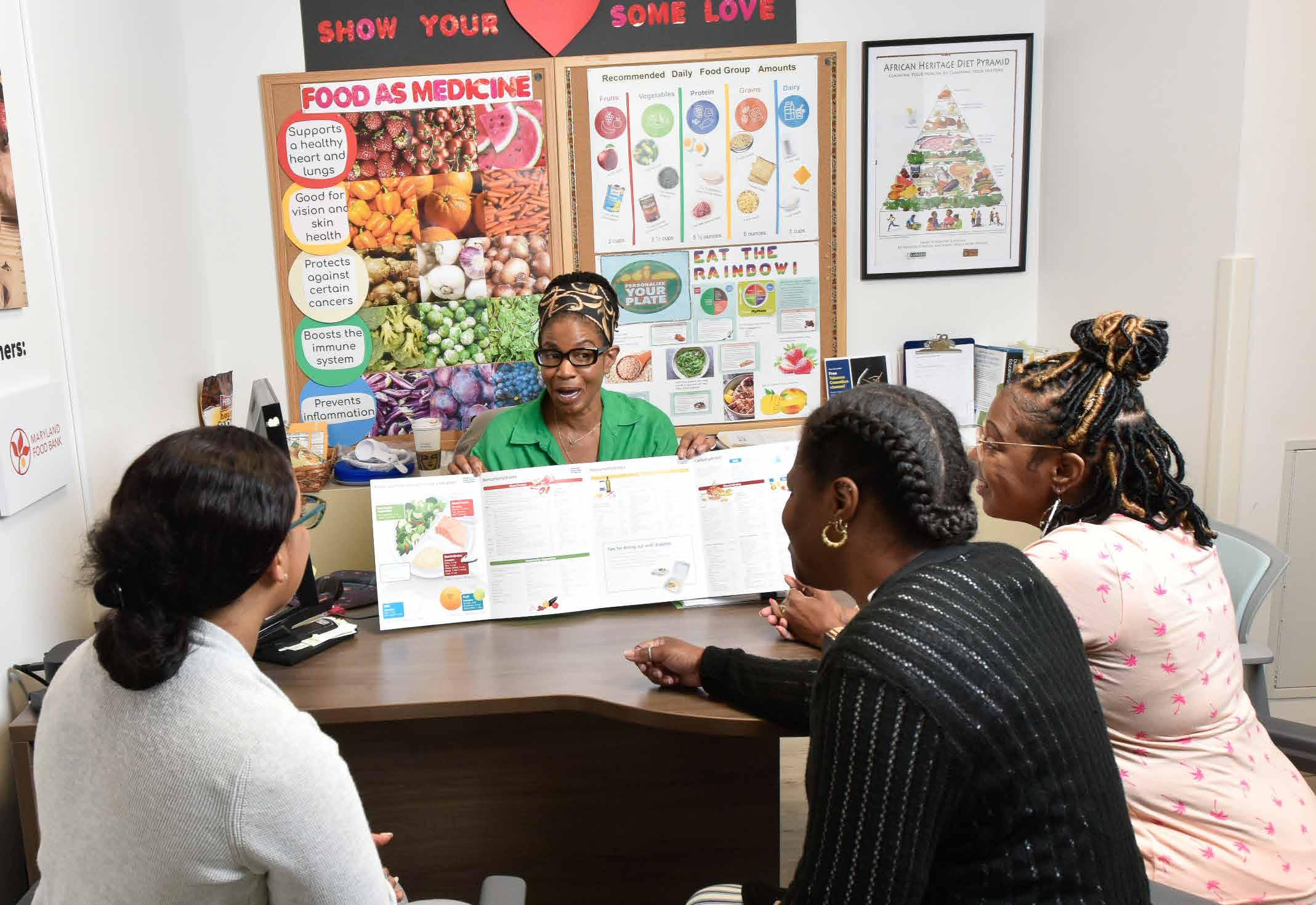
Making a Difference
Angela Roberson is one of the 15 to 20 graduates produced by the Nutritional Sciences Program annually, many of them destined to become RDs/RDNs who benefit Baltimore City. She spends her days collaborating with a community health advocate, a physician assistant and a hospitalist in her work as lead dietitian for the Food Rx program at Good Samaritan. Each patient is screened for social needs, including food security, housing, transportation and mental health. Through the six-month program, she provides disease-specific nutrition counseling and education, along with enough food for 10 healthy meals
household. The medically tailored meals go to patients with diabetes, heart failure, cardiovascular disease and other chronic ailments.
Roberson feels she’s making a difference.
“When I can get someone off insulin who goes to the emergency room because their blood sugars are uncontrolled, and they follow-up here on a referral from the hospital, and I can send fresh produce to their house, and I can teach them how to eat to heal themselves, and three months, four months later, they’re managing their diabetes with just food and physical activity, no longer on insulin, they’re getting their lives back, it’s very rewarding,” she says.
“I love my Morgan,” Roberson adds, “and…I really want more diverse representation in this profession. Patients need people who look like them to talk about their diets. I’m rooting for Morgan to make this happen.” n
29 MORGAN MAGAZINE, SPRING/SUMMER 2023 TEACHING THE HEALING POWER OF NUTRITION
We want to focus on reducing the disparity in healthcare. We want to have more professional people of color in this area.”
‘‘
— Dr. Joycelyn Peterson, Director of Morgan’s Nutritional Sciences Program
Morgan graduate Angela Roberson, RD, LDN, provides nutrition counseling and education to patients at MedStar Good Samaritan Hospital, in Baltimore.
MEETING THE GLOBAL CHALLENGE
MSU Innovates to Achieve Its International Goals
BY ERIC ADDISON
“TRANSFORMATION
MORGAN
2030: Leading the Future,” Morgan State University’s (MSU’s) strategic plan for 2021–30, was released to the public after approval by the University’s Board of Regents in January 2022, as a surge of the new Omicron variant was wreaking havoc across the country. Goal 6 of the plan: “Accelerate Global Education Initiatives and Expand the University’s International Footprint,” called for big increases in study abroad and international student enrollment, among other major changes. But at launch time for those initiatives, U.S. higher education institutions found themselves struggling to recover from the COVID-19 pandemic’s devastation of their efforts to internationalize.
The nation’s colleges and universities saw a 46% drop in new international students and a 15% decrease in total international enrollment in 2020–21, according to the Institute for International Education’s Fall 2021
International Student Enrollment
Snapshot. Likewise, NAFSA: Association of International Educators reported a “dramatically” lower number of U.S. college students participating in study abroad that academic year, because of increased travel risks and limited funding.
But despite those historic challenges, says MSU’s assistant vice president for International Affairs, Yacob Astatke, D. Eng., ’91 and ’10, the University has made significant progress toward realizing the vision of Morgan Global.
Virtual Connections
“President Wilson and Morgan’s other senior administrators halted all study abroad activities in March 2020, and for almost two years after that, we had almost no face-to-face study abroad, because COVID was still not under control,” Astatke recalls.

“So what we did was innovate,” he
continues. “I rearranged our division to focus on VE/COIL (virtual exchange and collaborative online international learning),” educational approaches that use internet technology to connect students and faculty remotely, “and we quickly began recruiting and training faculty who were interested. So between 2020 and 2021, when COVID prevented us from sending our students to study abroad, we significantly increased the number of students who were engaged in virtual exchange and COIL.”
Jafar AL Quraishi, ’22,was one of the students who benefited from COIL at Morgan. The recently graduated Bachelor of Science in Architecture and Environmental Design major joined with other students from around the world for an online cultural education experience hosted by Japan’s Kansai University, in Fall 2020, as part of one of his architecture courses at MSU.
“It was mostly students’ experience
MORGAN.EDU MORGAN MAGAZINE, SPRING/SUMMER 2023 30
PROGRESS s
Each one of us brought unique ideas and experiences to the table for discussion. The point of it was to learn how to accept others and be accepted as well.”
‘‘
— Jafar AL Quraishi, MSU Fall 2022 Architecture and Environmental Design Graduate
with each other, learning about each other’s culture and what was happening around the world,” he recalls.
Born in Iraq and raised in Jordan, Syria and Turkey before he came to the U.S. at age 17 with his family, AL Quraishi brought a wealth of cultural experience to the program, but he still found it beneficial: “On a scale of 10, it was an eight or nine experience,” he says.
Enrollment Forecast
When we spoke with him last fall, Astatke discussed the “big challenge” of increasing Morgan’s enrollment of international students from the
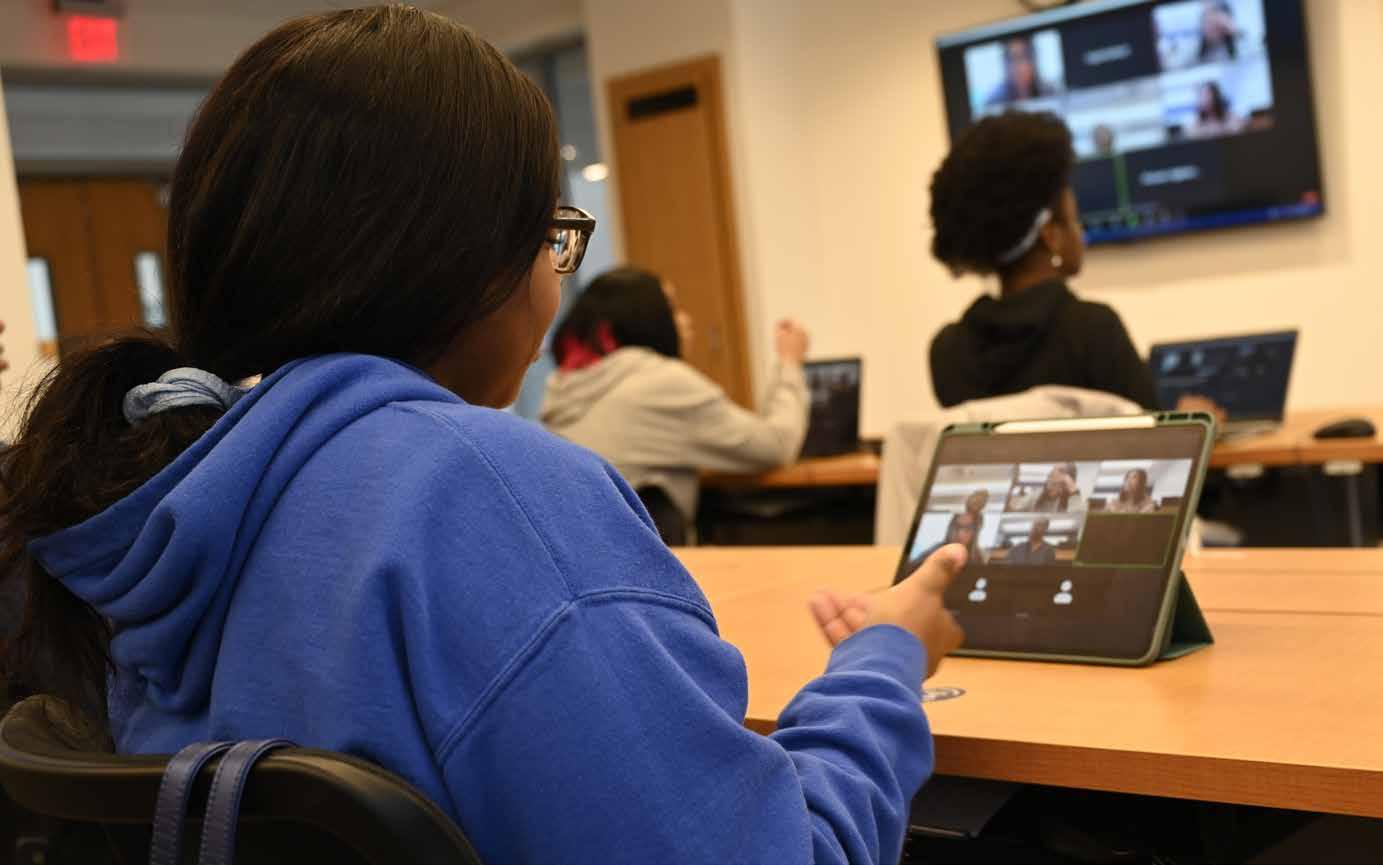
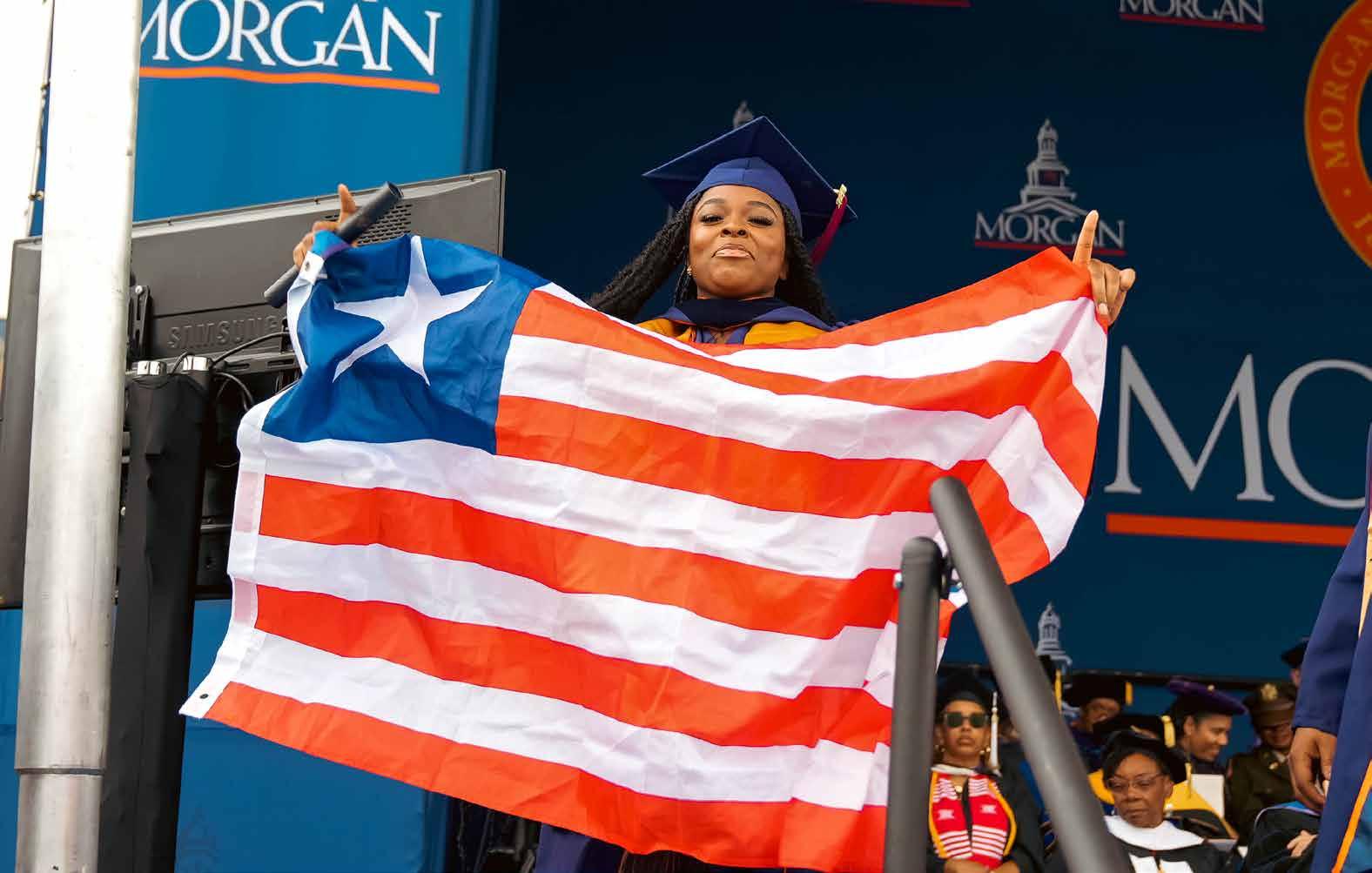
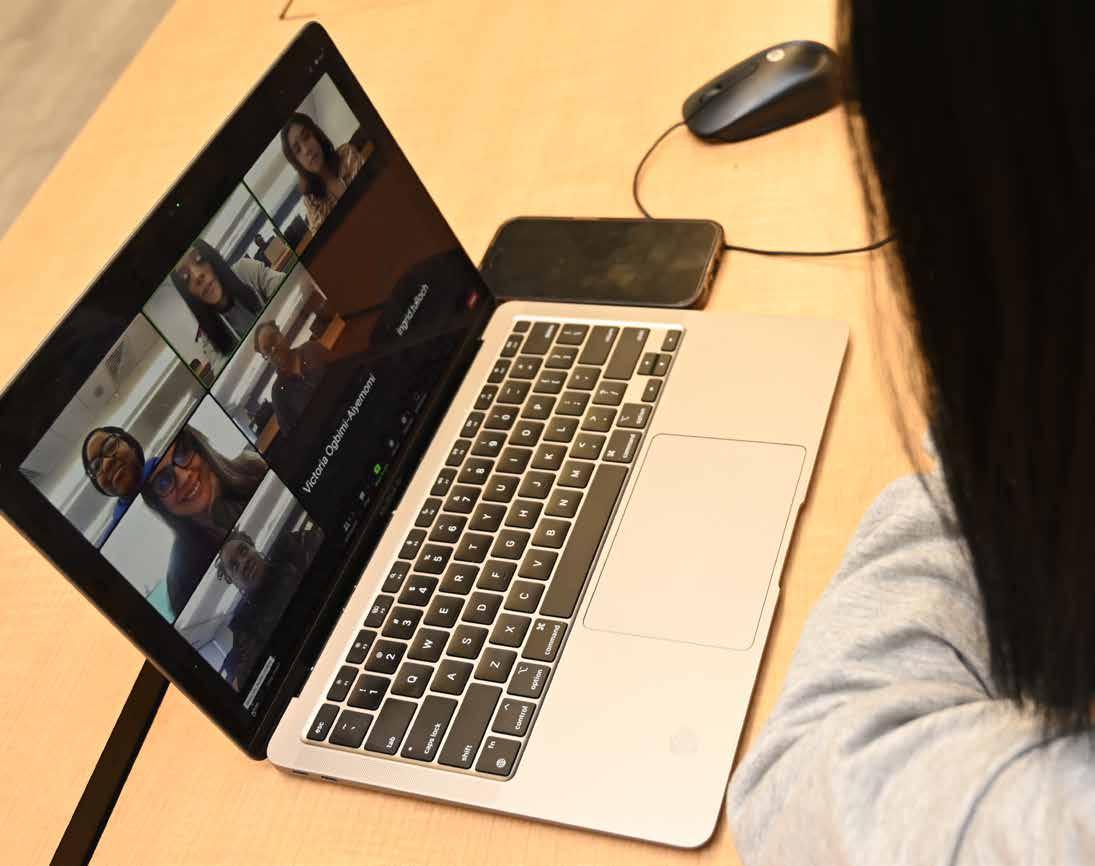
current number of 400 to 800, by 2030. He anticipates gradual growth in the category, with the use of a new tool for recruitment. The Maryland General Assembly passed legislation in 2021 to allow higher education institutions in the state to use agencies to recruit students.
“So one of the ways Morgan will be increasing its enrollment of international students, especially in countries like China and India, where it is very hard to recruit, is by using agencies,” he says. “The large majority of our international students will come from Africa,” Astatke predicts, “because Africa has the youngest population in
the world and also the fewest number of universities in the world.”
Indeed, four of the top 10 countries of origin of Morgan’s international students are in Africa. Nigeria is the top contributor to the total, with 222 of its citizens enrolled. Morgan’s strategic partnership with Nigeria’s Tertiary Education Trust Fund (TETFund) is a major reason for that result. The fiveyear partnership, launched in May 2020, is designed to create a pathway for Nigerian students to pursue Ph.D.s and postdoctoral research in disciplines relevant to the developmental needs of Nigeria. The agreement provides the students with scholarships and other grants to fully fund their tuition, fees and living expenses for at least three years and also supports TETFund’s establishment of Centers of Excellence in Nigeria, institutions designed to increase the research capacity of
Continued on page 32
31 MORGAN MAGAZINE, SPRING/SUMMER 2023 MEETING THE GLOBAL CHALLENGE
(Morgan has been) beyond what I expected. The people are warm. Everyone is going out of his way or her way to help me acclimatize and settle in. Truly, you can see the Core Values being played out.”
‘‘
— Ifeyinwa Madu, MSU Industrial and Computational Mathematics Ph.D. Student
Angel Smith, proudly presenting the Cuban flag, graduates at Morgan’s 2023 Spring Commencement, upon receiving a Bachelor of Science in Multi-Plaftorm Production from the School of Global Journalism and Communication.
Photo credit: Emmanuel Durojaiye
Nigerian higher education through collaborative research with Morgan.
Ifeyinwa Madu, a computer science lecturer at The Federal Polytechnic Bauchi, in Bauchi State, Nigeria, is one of the 90-plus TETFund-sponsored Ph.D. students admitted to Morgan since Fall 2020. Selected for her cohort from more than 500 nominees, she arrived in the U.S. on Christmas Day 2021 and began pursuing her doctorate in Morgan’s Industrial and Computational Mathematics program last spring.
Coming to America was a journey she’d long prayed for, but her experience at Morgan, Madu says, has been “beyond what I expected. The people are warm. Everyone is going out of his way or her way to help me acclimatize and settle in. Truly, you can see the Core Values being played out…. Morgan is actually a spiritual environment, I discovered.”
‘A Bold Vision’
The pandemic’s disruption of study abroad also created an opportunity for Morgan. Working with two other senior international officers from Clark Atlanta and Tennessee State Universities, and with a Maryland-based nonprofit organization, Astatke utilized the quiet time afforded by the crisis to develop a new program: the HBCU Africa Coalition 100,000 Strong Africa Initiative.
“Less than 6% of Black students in the U.S. study abroad, compared with 20% of Caucasians. And when you look at African Americans at (HBCUs), the average is actually 2%. I estimate that 80% of HBCUs don’t even have a study abroad program, because of a lack of funding. Many HBCU students barely have enough money to pay their tuition and fees,” Astatke says. “The only way the statistic for Black HBCU students will go from 2% to 30% is by having a bold vision.”
“Our 100,000 Strong Africa Initiative is modeled on President Obama’s 100,000 Strong Americas program, which had a goal of sending up to 100,000 students to Latin America to be engaged in experiential learning, volunteerism and study,” he explains. “We thought, ‘We can be ambitious and launch a similar program focused on Africa.’ Last May, we took the first 100 of the 100,000 Strong to Ghana.”
The participants attended a conference in Accra and stayed in Ghana two to three weeks after that event to engage in experiential learning.
“Our goal is to get funding from the State Department, from (nongovernmental organizations), from philanthropists and others to get scholarships for our 100,000 Strong Africa students to study abroad,” Astatke says.
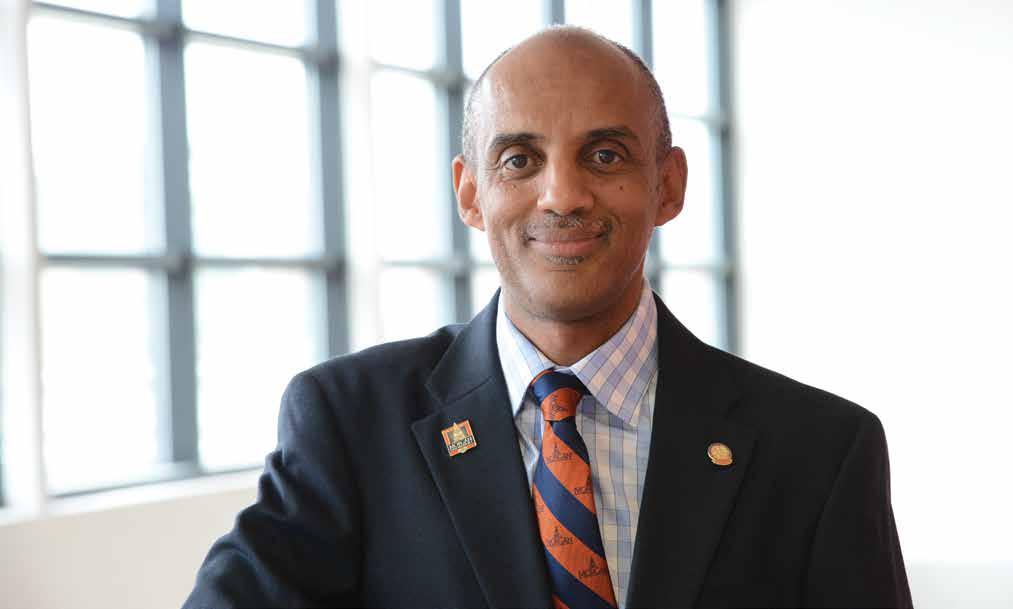
Building Momentum
E. Victoria, a Spring 2023 graduate of MSU’s Master of Landscape Architecture program, was in the inaugural group.
The emotional impact of the experience was “so big,” Victoria said last fall. “It has changed me. I came back with a mission. My capstone project is focused on bringing African symbolism into the landscape, particularly on HBCU campuses. I’ve also been thinking about pursuing a Ph.D. at Morgan in Architecture, Urbanism and Built Environments, because I realize I don’t have enough space (in my master’s program) to cover this decolonization of landscape architecture.”
Looking ahead, Astatke anticipates that Morgan Global will continue to regain ground lost during the pandemic to move toward other objectives, including establishment of a campus outside the U.S. and development of partnerships with African universities to offer dual-degree academic programs.
“The key now,” Astatke says, “is building on our momentum and increasing our activities that support international partnerships.” n
MORGAN.EDU MORGAN MAGAZINE, SPRING/SUMMER 2023 32
Less than 6% of Black students in the U.S. study abroad, compared with 20% of Caucasians. And when you look at African Americans at (HBCUs), the average is actually 2%.”
— Dr. Yacob Astatke, MSU Assistant Vice President for International Affairs
(100,000 Strong Africa) has changed me. I came back with a mission. My capstone project is focused on bringing African symbolism into the landscape, particularly on HBCU campuses.”
‘‘ ‘‘ Continued from page 31
— E. Victoria, MSU Master of Landscape Architecture Graduate
Morgan’s Magnificent Marching Machine to Perform at D-Day 80 Normandy Parade
The MSU Marching Band received an exclusive invitation from Music Celebrations International to participate in the official 80th Anniversary Commemoration of D-Day: The Battle of Normandy and the Liberation of France, which will take place on June 6, 2024. The Magnificent Marching Machine will be the first HBCU band to perform at this annual commemorative event.
Help make this truly historic event and dream opportunity happen by supporting the Magnificent Marching Machine’s Band Fund. Your gift will assist with the band’s six-night, eight-day trip to France representing your alma mater, Fair Morgan, and the nation.

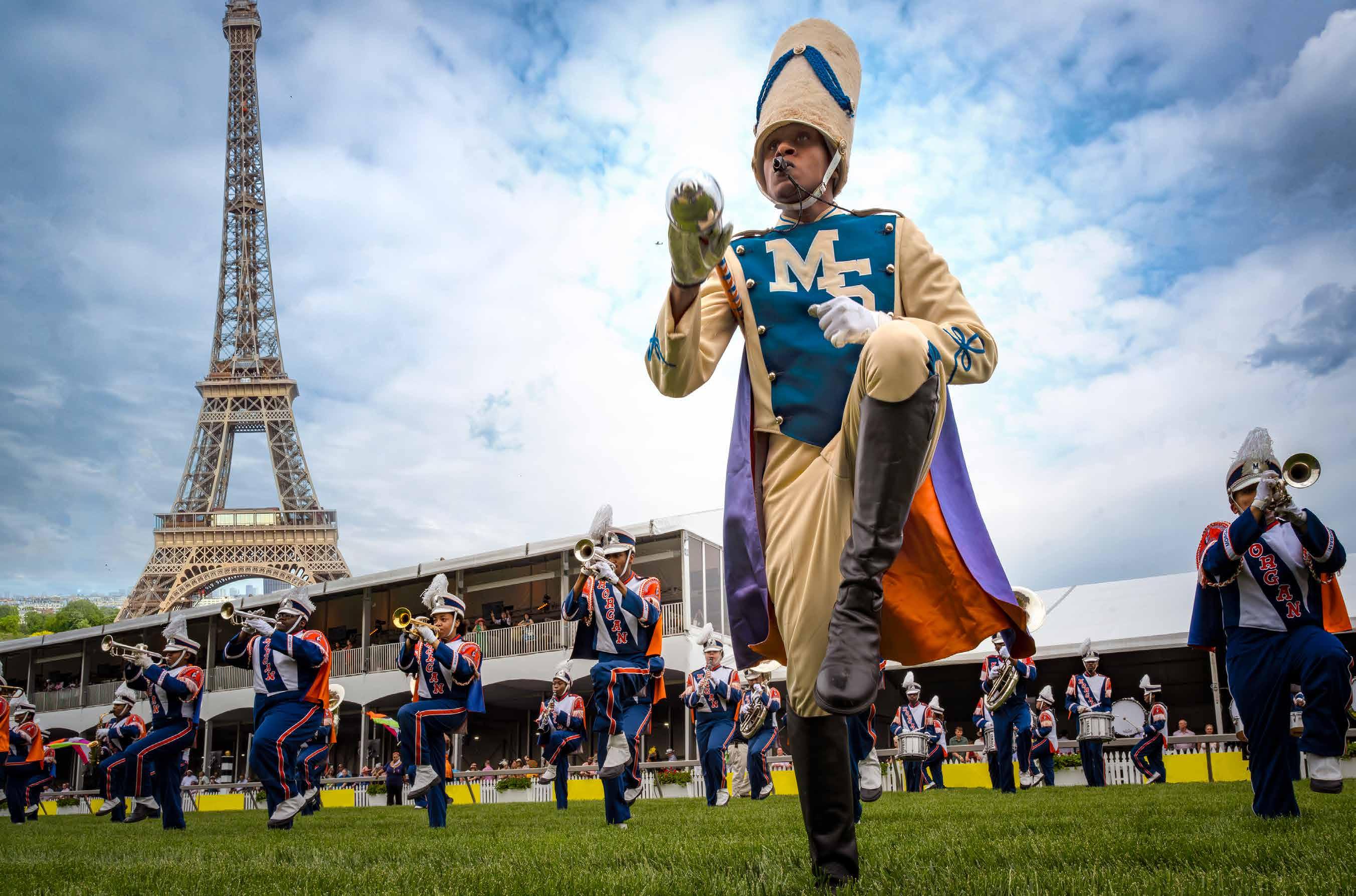
3 MORGAN MAGAZINE, SPRING/SUMMER 2023 givetomorgan.org Givetoday@
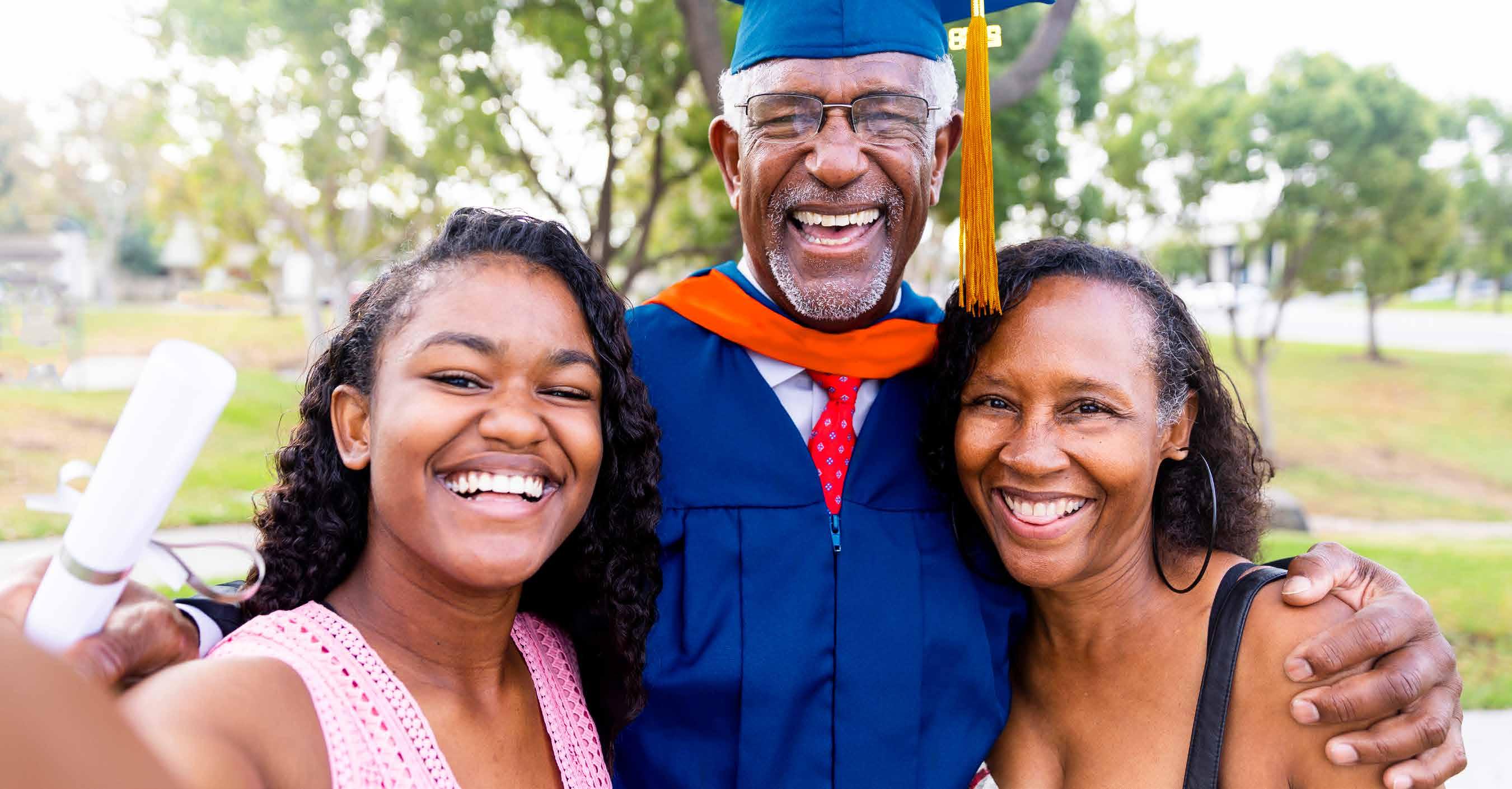

MORGAN.EDU MORGAN MAGAZINE, SPRING/SUMMER 2023 4 1700 E. Cold Spring Lane McMechen Hall, Suite 635 Baltimore, MD 21251 Office of Public Relations and Strategic Communications 443-885-3022 www.morgan.edu Non-Profit Organization U.S. Postage PAID Permit #4995 Baltimore, MD Complete The Journey Ready to finish your degree? 18 Bachelor’s and Graduate Degree Programs n Affordable Tuition n Online Classes n Flexible Course Schedules n Personal Academic Support n Scholarships Available n Transfer Credits Accepted APPLY TODAY! MORGAN.EDU/MCY
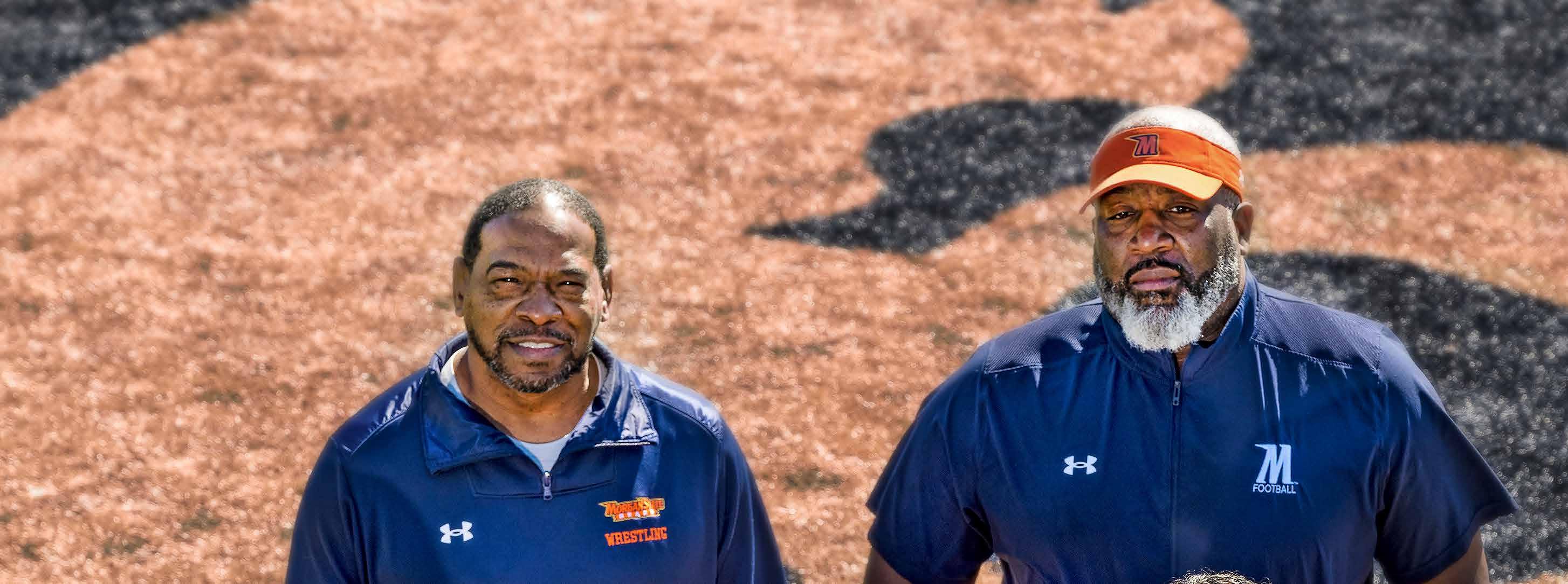
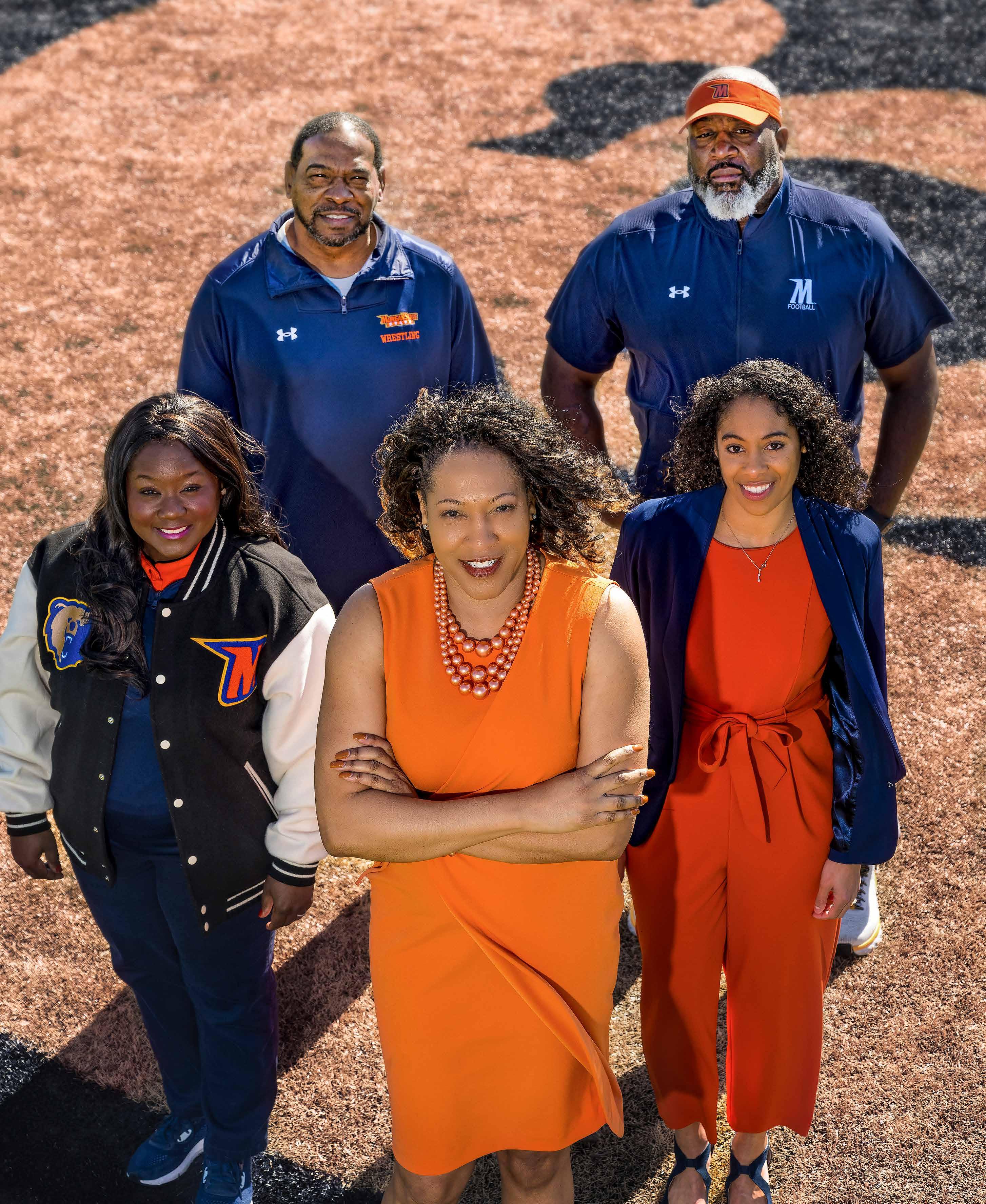




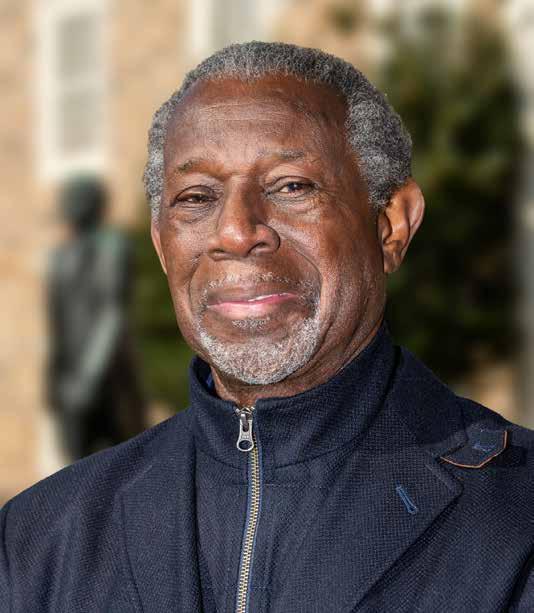


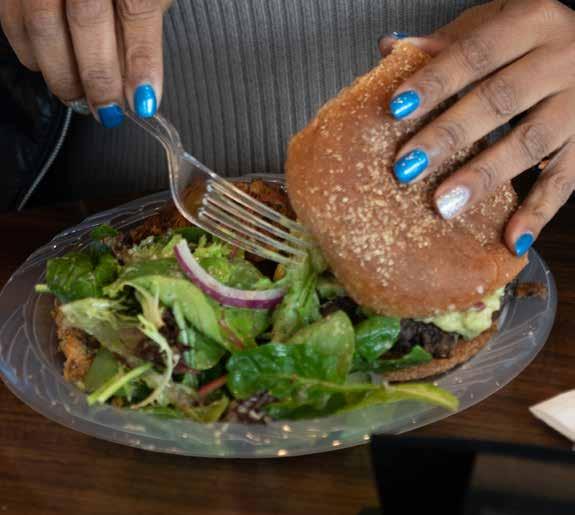



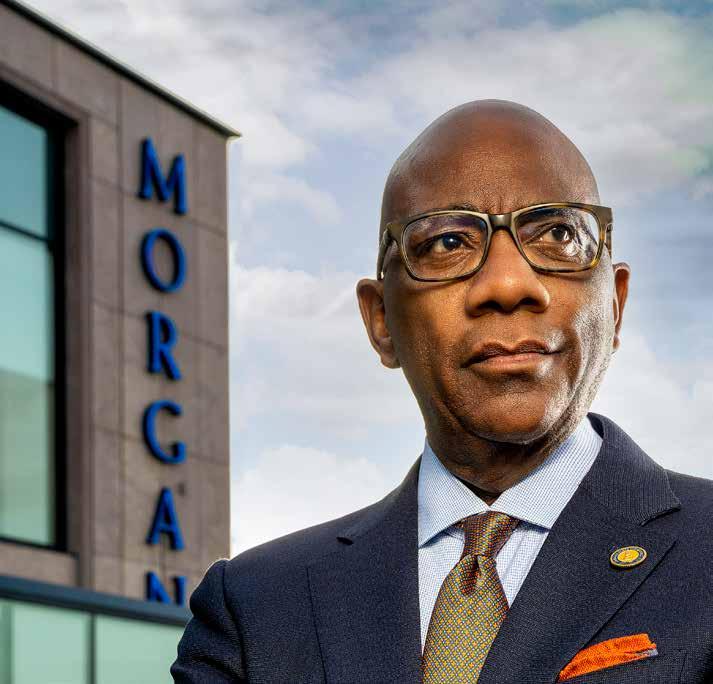



















 BY B. DENISE HAWKINS
BY B. DENISE HAWKINS






 BY CHRISTINA ROYSTER, MSU CLASS OF 1993
BY CHRISTINA ROYSTER, MSU CLASS OF 1993












 BY ERIC ADDISON
BY ERIC ADDISON











